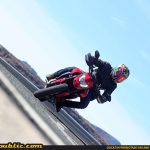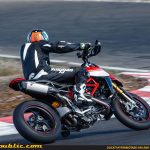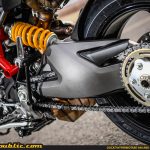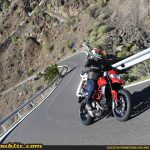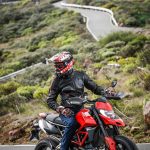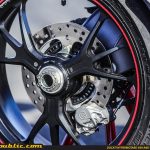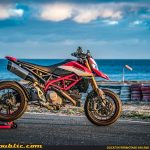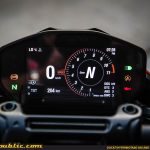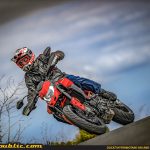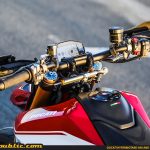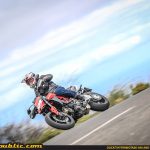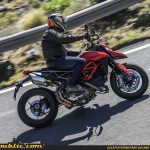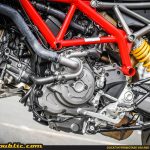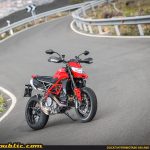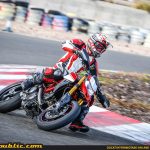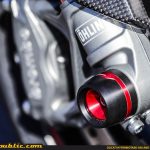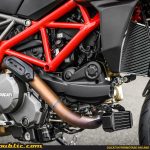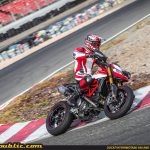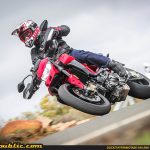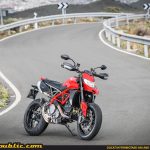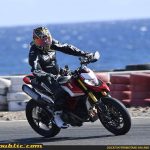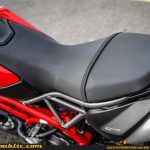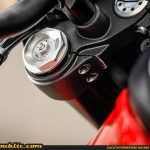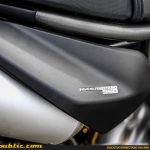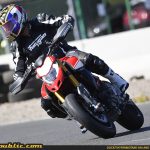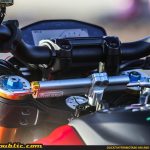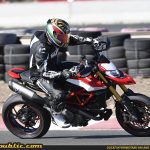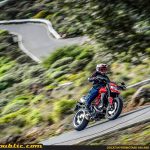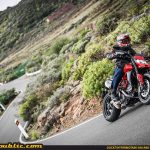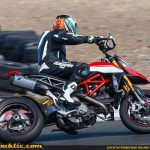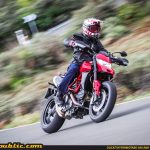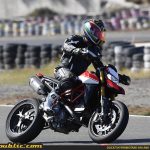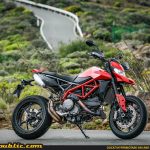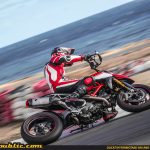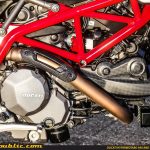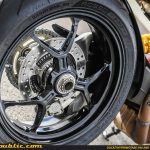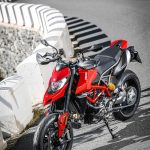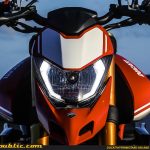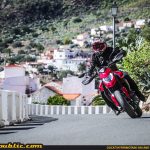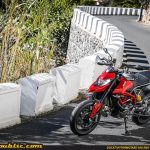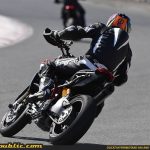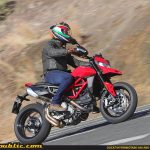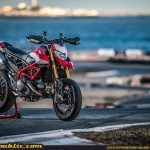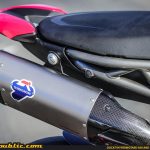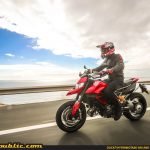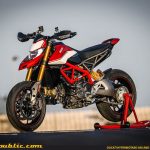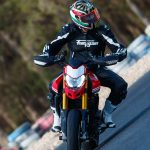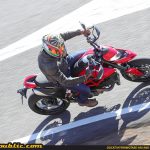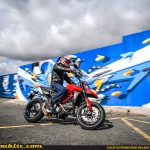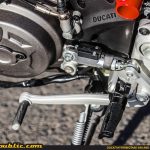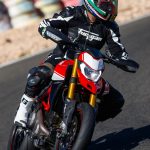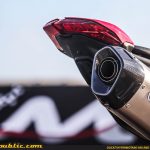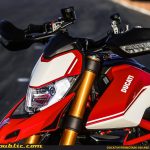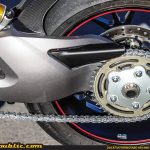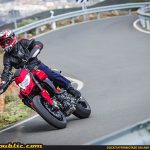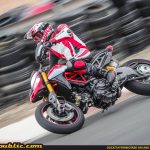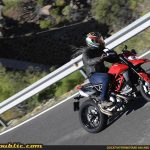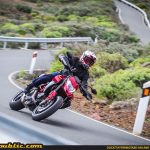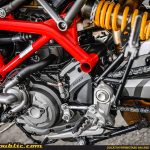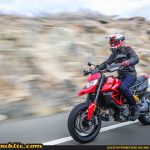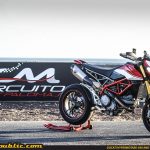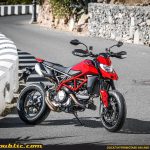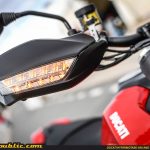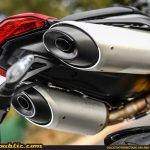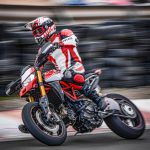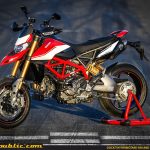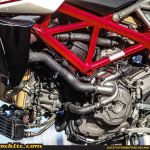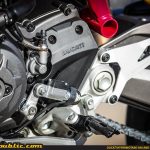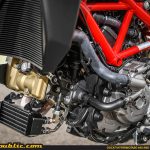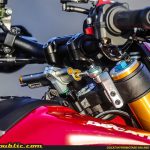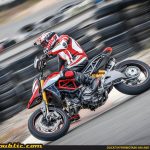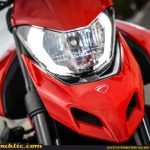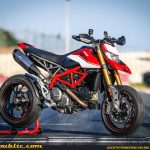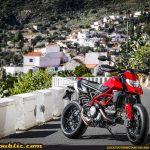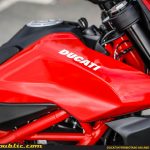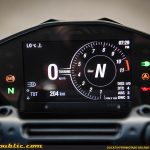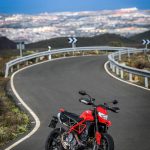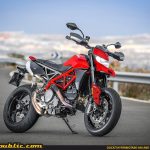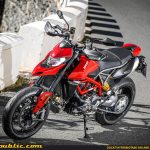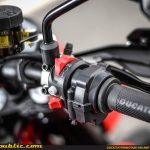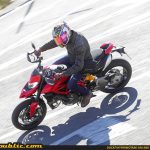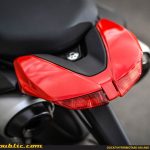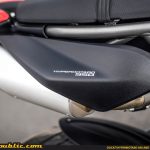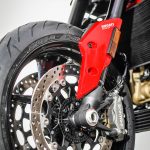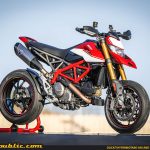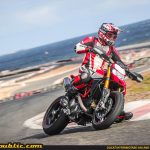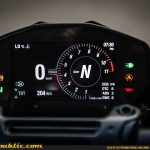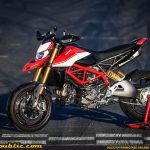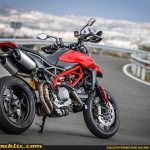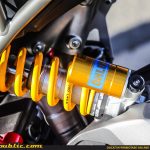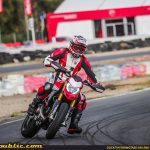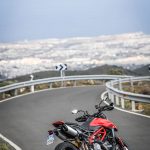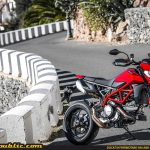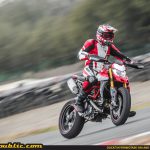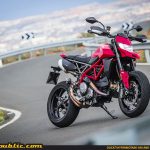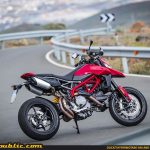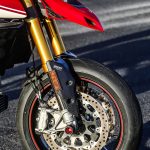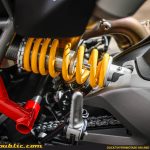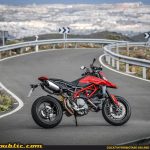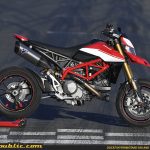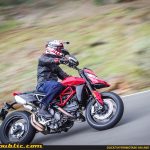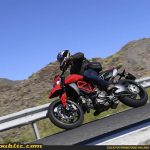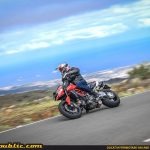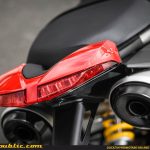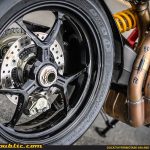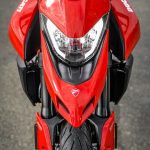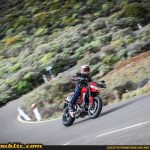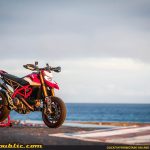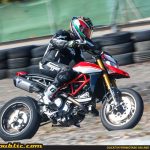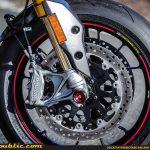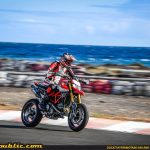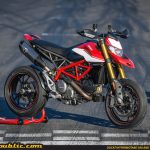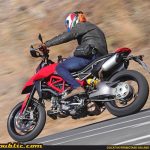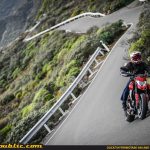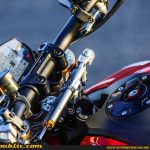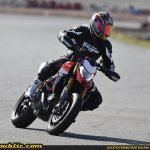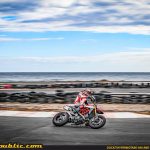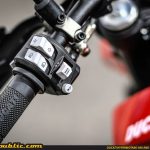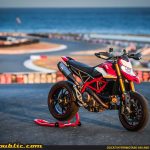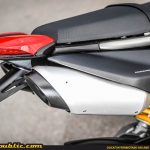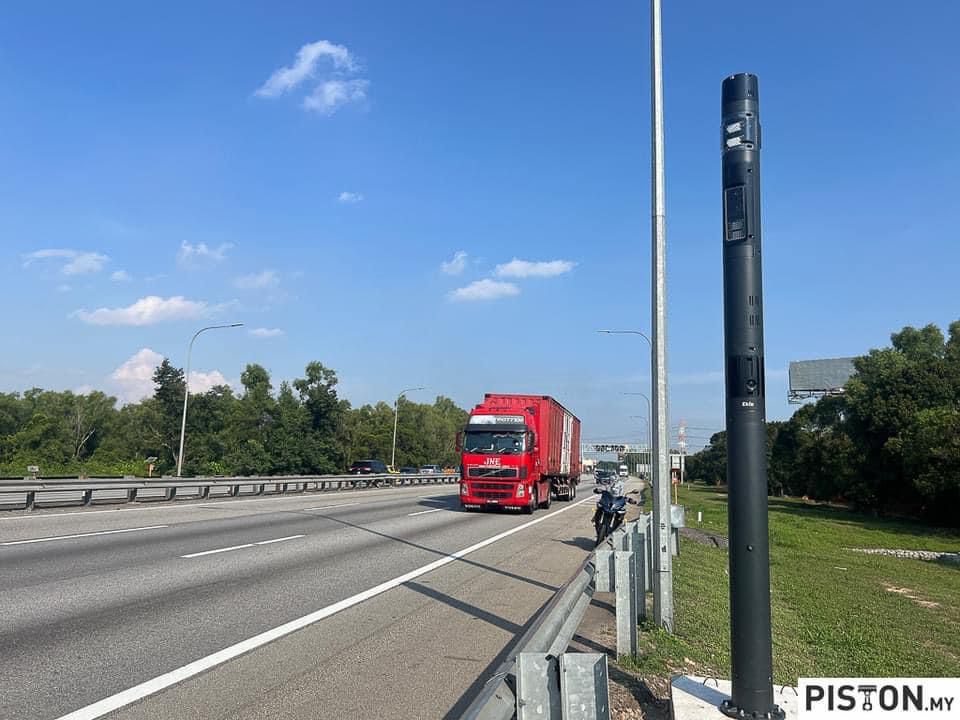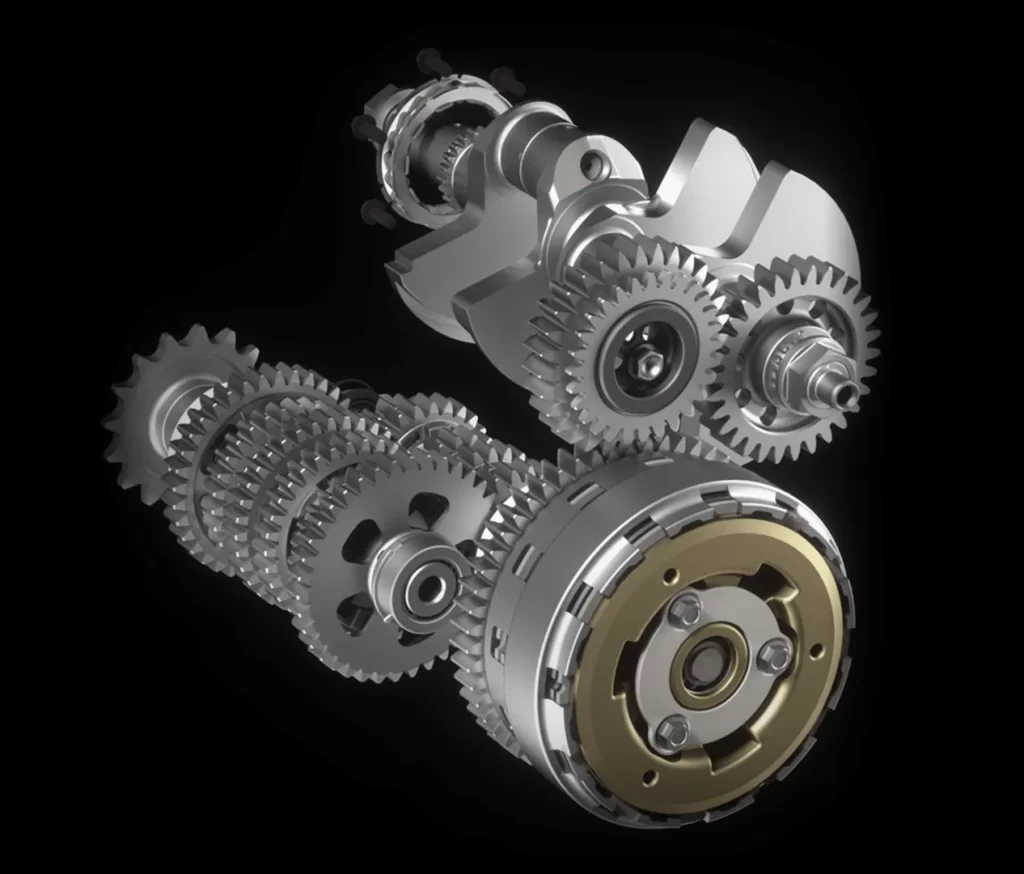- The successor to the Hypermotard 939 offers hooligan character with added refinement.
- It manages to offer some daily riding essentials such as comfort to a bike otherwise built with the sole focus on performance.
- We rode the new Hypermotard 950 and the 950 SP in Spain recently.
- The standard 950 is shorter in length and did well around the hills of Grand Canary Island.
- The 950 SP is lighter, taller and offers a quick shifter as standard.
The Ducati Hypermotard has always been a bit of a rockstar of the motorcycling world. The kind that makes a lot of noise and gets a lot of attention wherever it goes.
So when the new Hypermotard 950 was introduced to the world in November of 2018, the motorcycling world stood still, just as it always does when a new Hyper is unleashed.
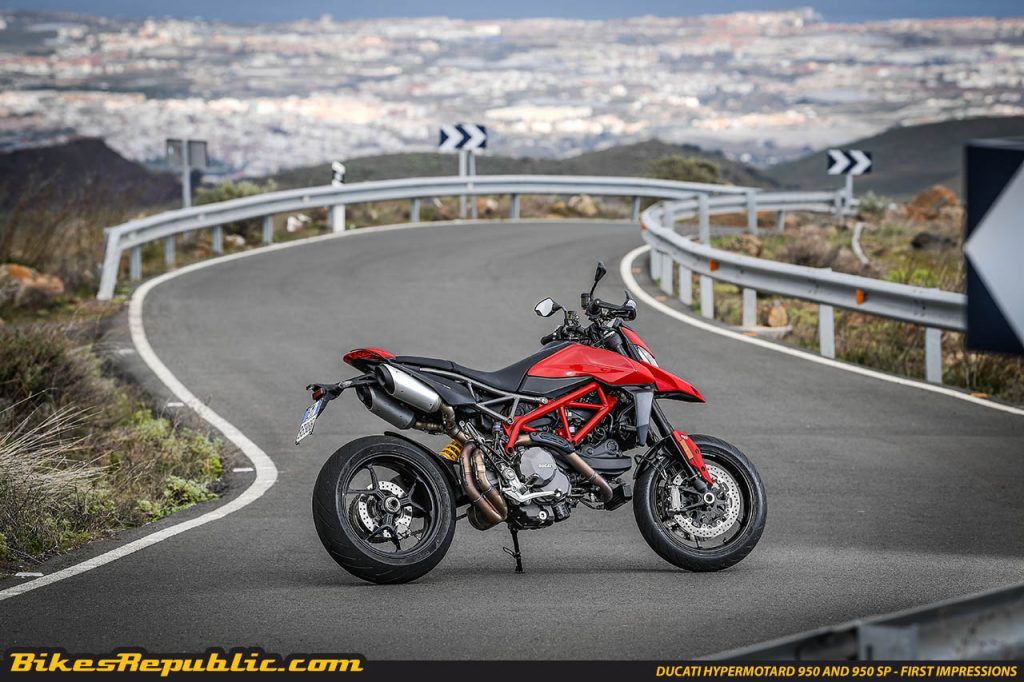
Quick history fact – the Hyper was first introduced back in 2006, and is a product with the sole focus of providing countless hours of entertainment. Designed by Pierre Terblanche, a protege of the legendary Massimo Tamburini, the Hypermotard did not receive the usual launch party.
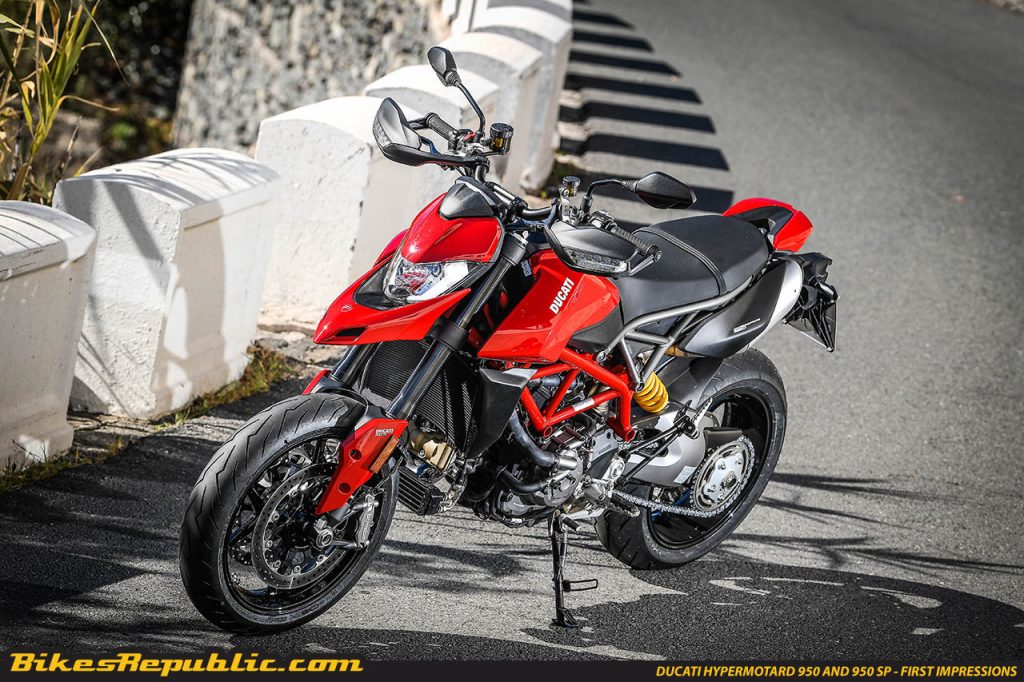
After many months of rumours about Ducati building a supermotard bike to take on the likes of KTM and Husqvarna, the Hypermotard was instead introduced via a dedicated micro-site, accessed from the main Ducati website. The Hyper 1100 received such fanfare at its digital unveiling that it crashed Ducati’s global website.
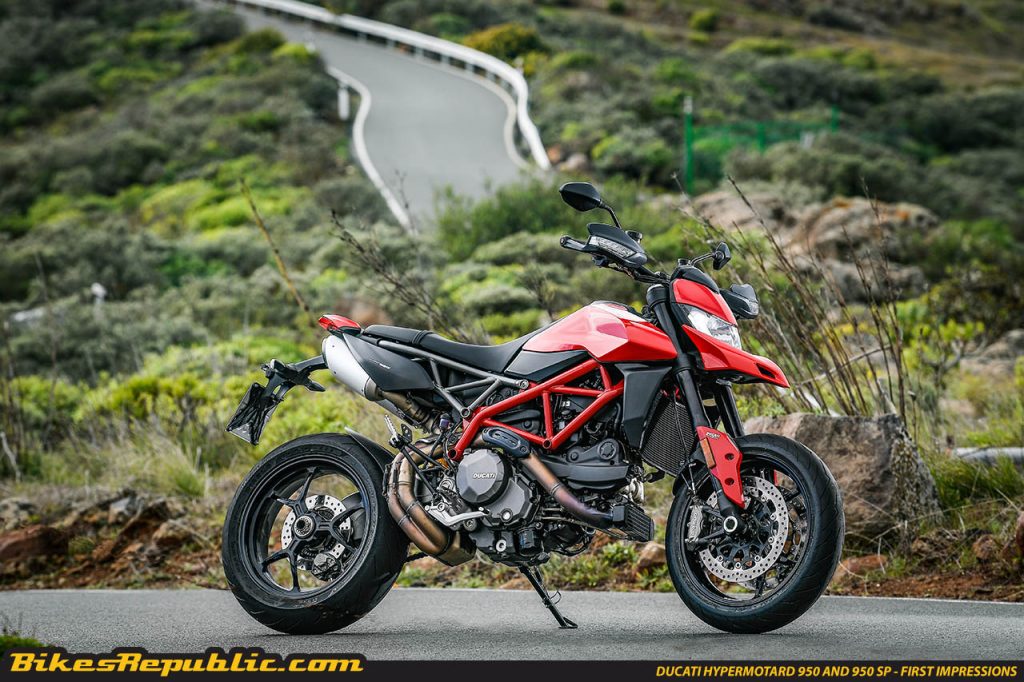
And now, 13 years later, I am in the Grand Canary Islands in Spain, ogling at the new Ducati Hypermotard 950 – the grandchild of the 1100 which later became known as the King of Wheelies, and the 939, its lighter, smaller but wilder successor.
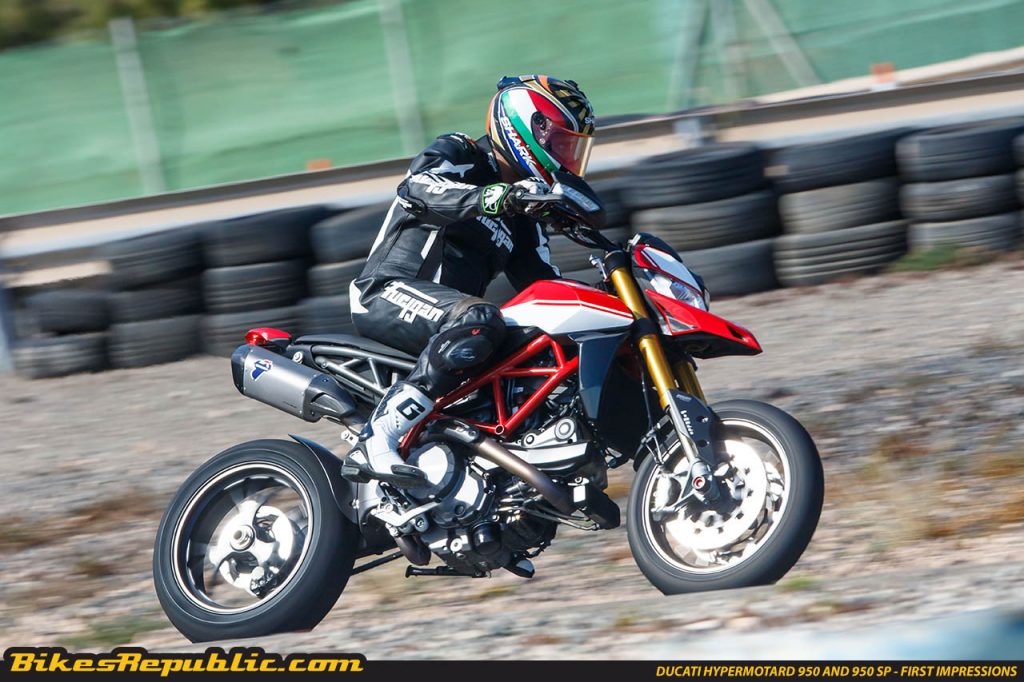
So what’s new?
The first thing that gets you is that the bike really does not look all that much different, but it all becomes clear as soon as you start paying attention to the details. In fact, besides the trellis frame, everything on the 950 is all-new and/or vastly improved from before.
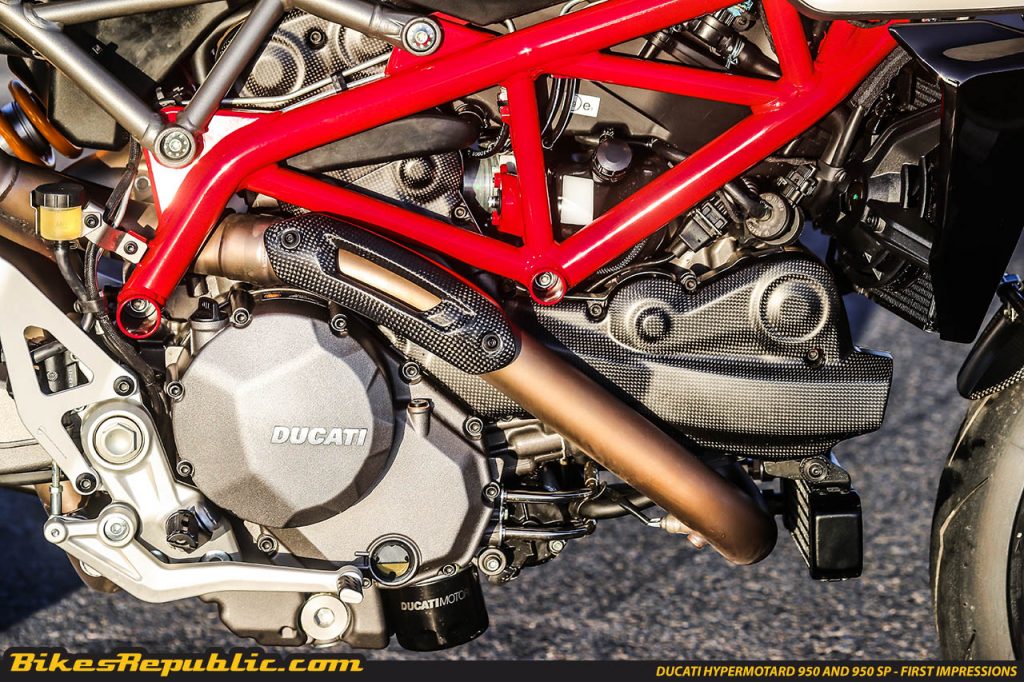
The exhausts for one are now placed back under the seat just as they were with the original 1100 (the 939 had its exhausts on the side). You can however opt for a side mounted exhaust as Ducati offers aftermarket Termignonis.
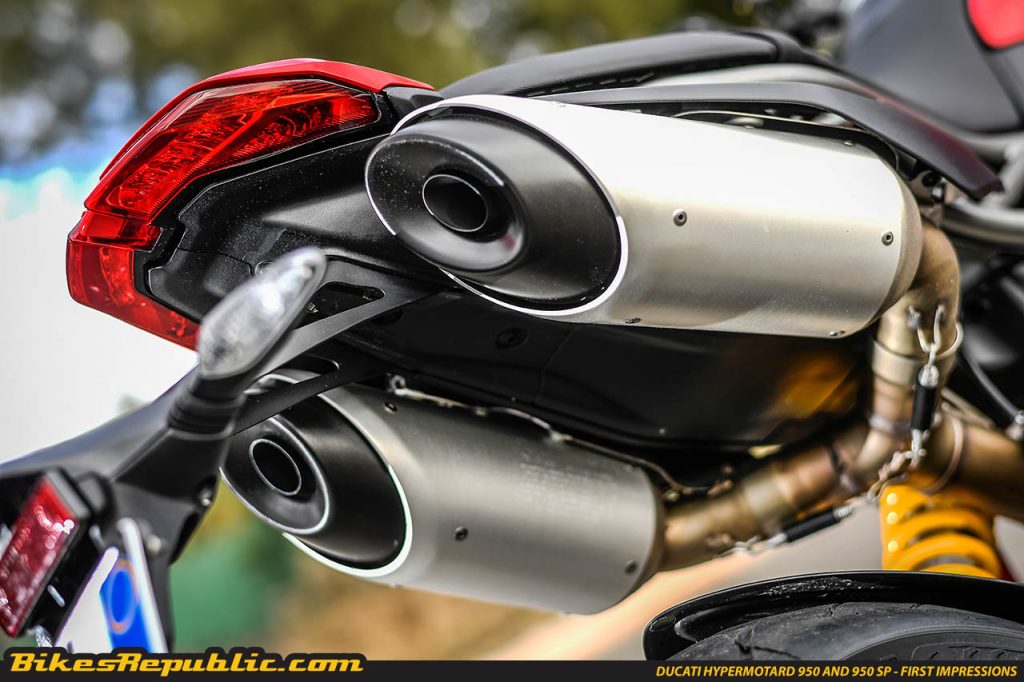
But if you prefer the underseat layout but want Termigs as well, Ducati has that as an option too, as well as a side exit Termig shown in the second photo below.
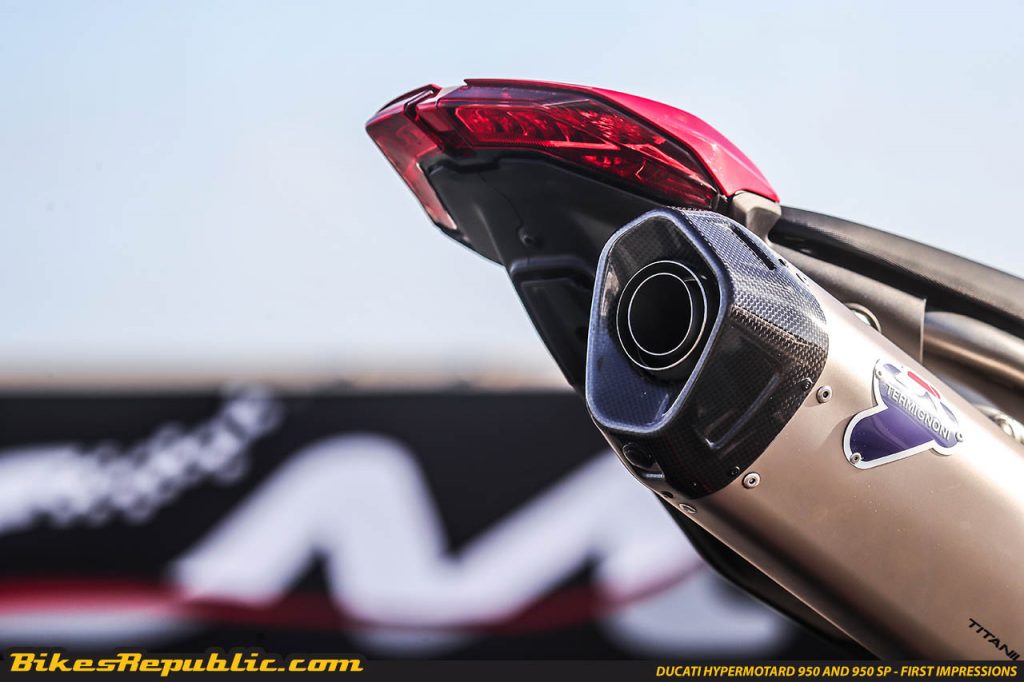
The seat and fuel tank layout is next – the seat being slimmer towards the front but wider where it matters to offer more support, and with a lump for additional cushioning for the passenger.
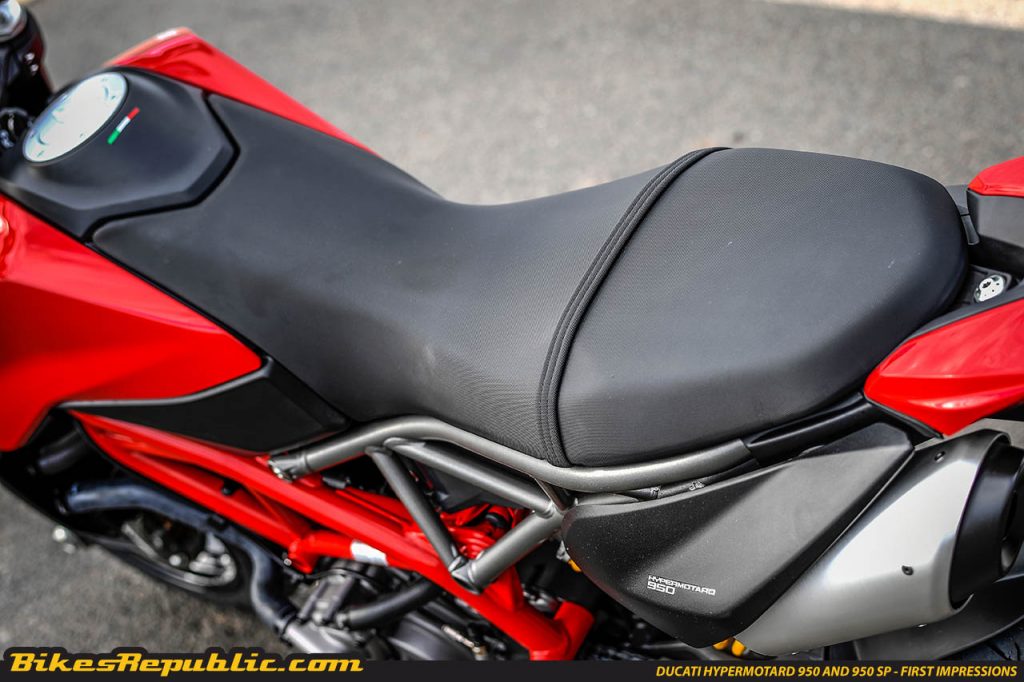
The seat on the SP version is flatter than the standard 950, to accommodate the rider moving back and forwards during hard riding.
At 14.5-litres, the fuel tank too is 1.5-litres smaller than the 939 and has been redesigned to make it appear smaller so that you sit further in front, just in case you want to slide the rear tyre around, which is the proper way of riding a supermotard, but the 950 obliges knee scrappers as well.
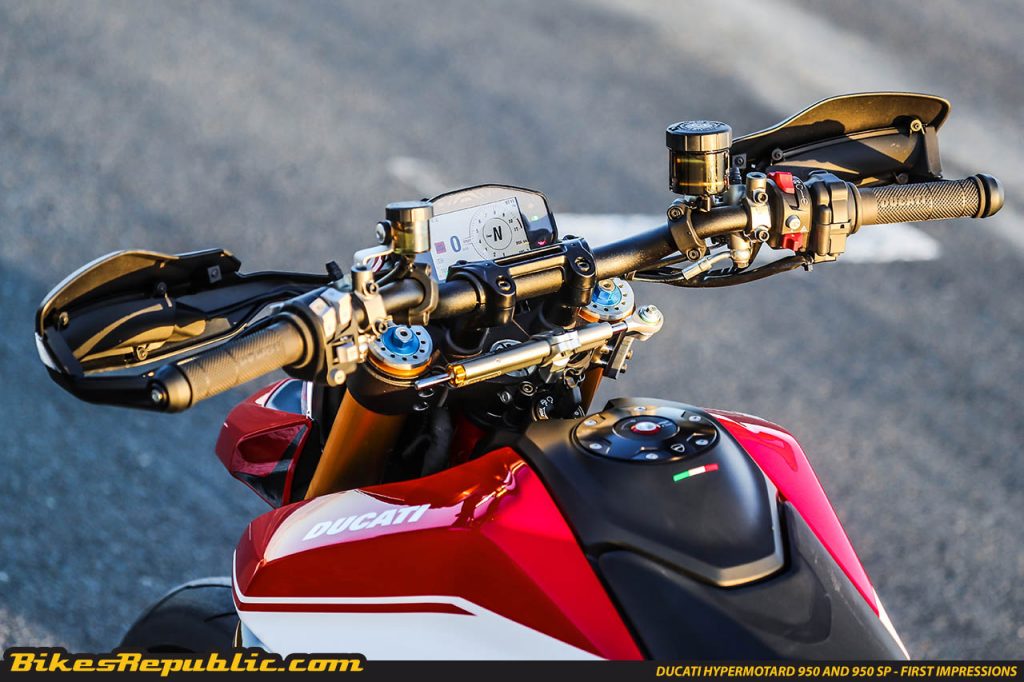
Then there is a new digital TFT instrument display which is similar to that of the Panigale V4. Not only is the new screen completely new and a much welcomed departure from the old, but when accessorised with the Ducati Multimedia System (DMS), the system is able to connect to your phone via bluetooth and will then display incoming calls, the music you are listening to in your helmet, and will also display text messages.
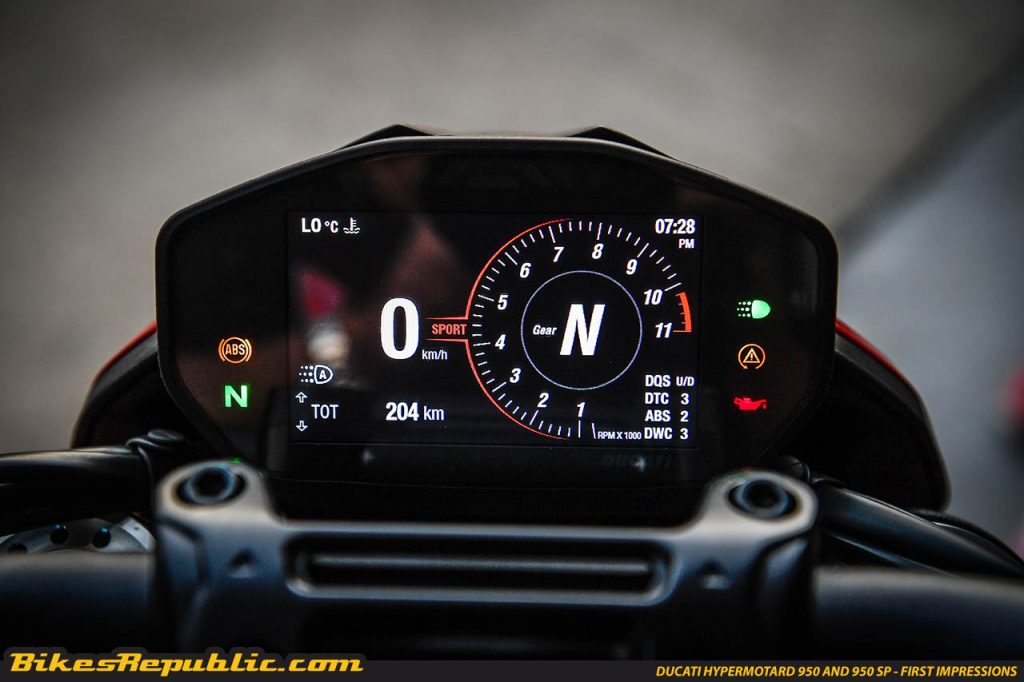
Personally, I felt there was too much going on already with the speedo, rev meter, gear indicator and other engine essentials, but if that is the future of rider-bike connectivity, I could deal with that, I do personally prefer listening to music when riding, and not missing phone calls.
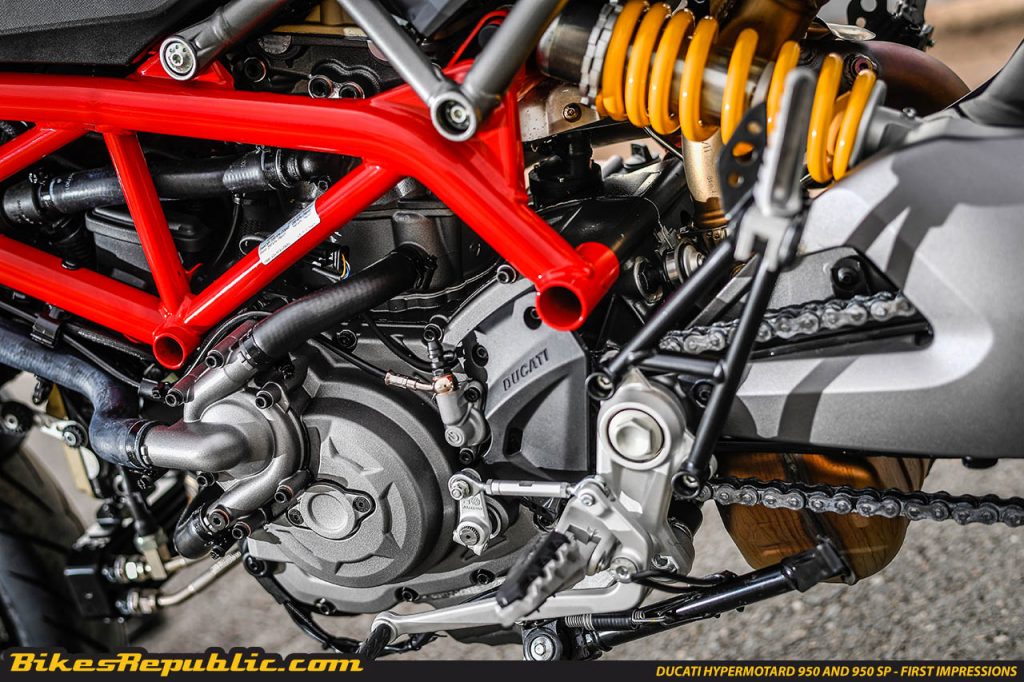
What about the engine?
So other than visual difference, the real difference lays in the heart of the bike – a revised 937cc Testastretta 11 degree L-twin engine.
It is essentially the same engine with the old 939cc but with a new torque curve that gives you access to over 80% of available torque from as low as 3000rpm.
To be precise, that 82% of the 96Nm of torque is available from 3000rpm and a further 88% from 5500 to 9500rpm.
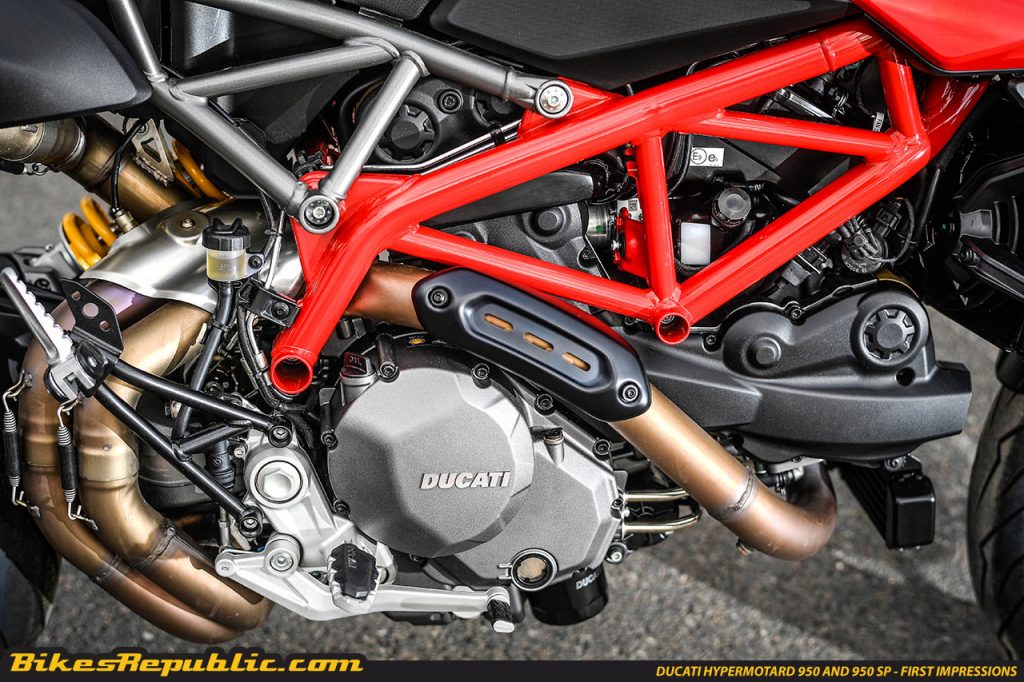
What this basically means is that you can rely on engine torque a whole lot more than before without much shifting.
Instead you can rely on the engine to pull away when you need it to, instead of banging down gears as you would on the 939.
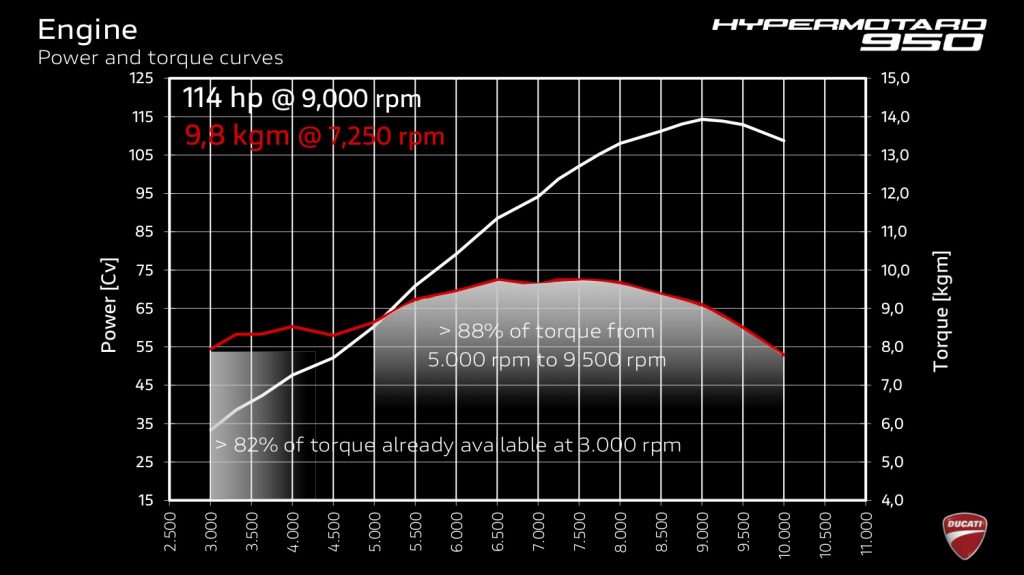
And because the bike comes with riding modes, the engine of course responds accordingly to the chosen mode. In Sport for example, the engine is lively and rev happy.
In Touring mode, the throttle response is lazier yet gives you full access to the Hyper’s 114hp. Urban restricts power to 75hp, and gives the bike a more docile character.
The image below breaks down the amount of power you get and the electronic interference.
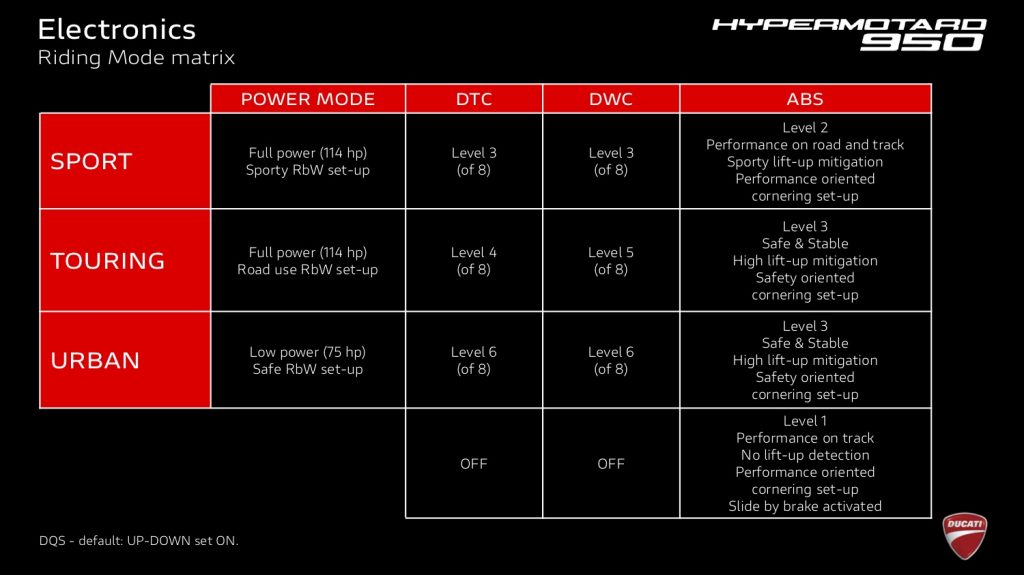
Swapping between modes is simple and can be done on the fly, but customising each mode and its braking and various other parameters (such as traction control interference) requires you to be at a standstill.
But being able to customise the electronics package according to your liking is a huge bonus.
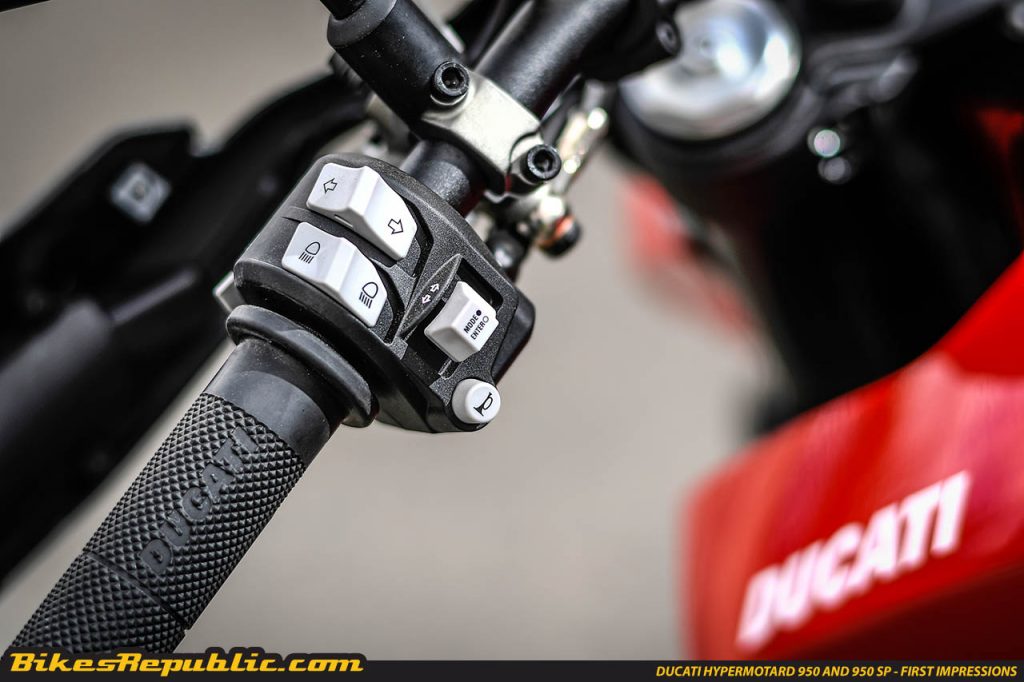
A little more tech details – so the engine is basically the same as on the 939, but how is it more powerful, more responsive yet more fuel economical than before? Some really smart people at Ducati bumped up the compression ratio to 13.3:1 from 12.6:1, and with that comes a new exhaust valve timing as well as a new 53mm throttle body a new ICU. This gave the bike a little more power.
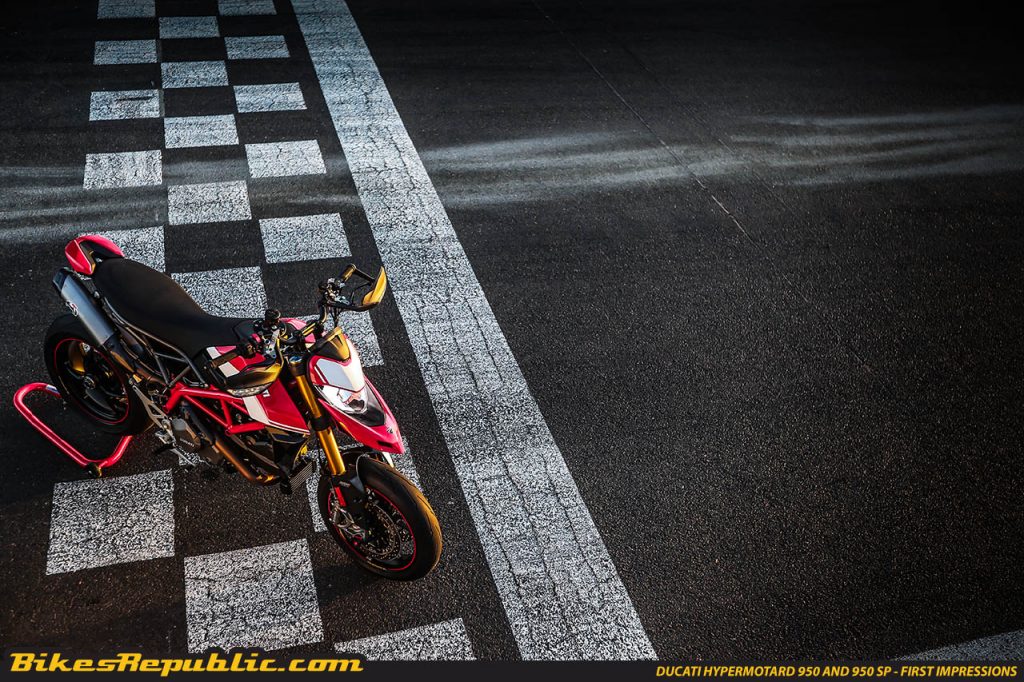
But lightness is also the name of the game for the Hypermotard. The engine for example is a full 1.5kg lighter, achieved by lightening the clutch, alternator covers, gearshift drum and by using magnesium cam covers.
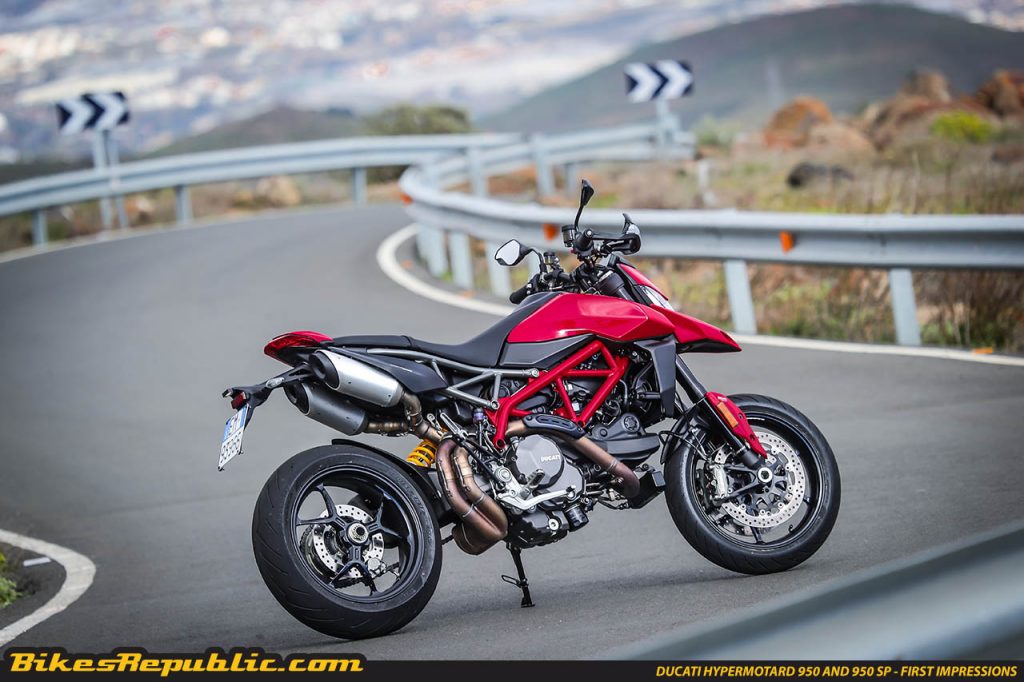
As a whole, the 950 is about 5kg lighter than the 939. And even though the trellis frame is almost the same as before, it uses tapered tubing while the rear subframe is also a bolted-on trellis design. This contributes enormously to the overall weight saving of the bike.
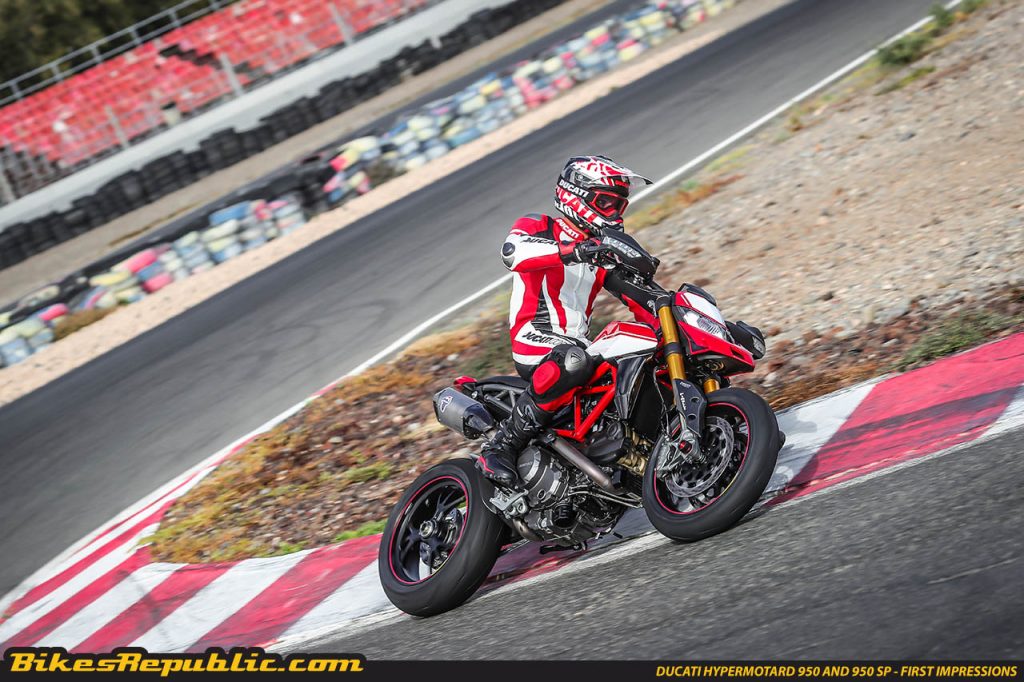
Handling, what can you look forward to?
As you would probably expect from a Hypermotard, handling is fantastic! Sharp, obliging and unsurprisingly accurate, the new 950 does exactly what you want it to, when you want it to.
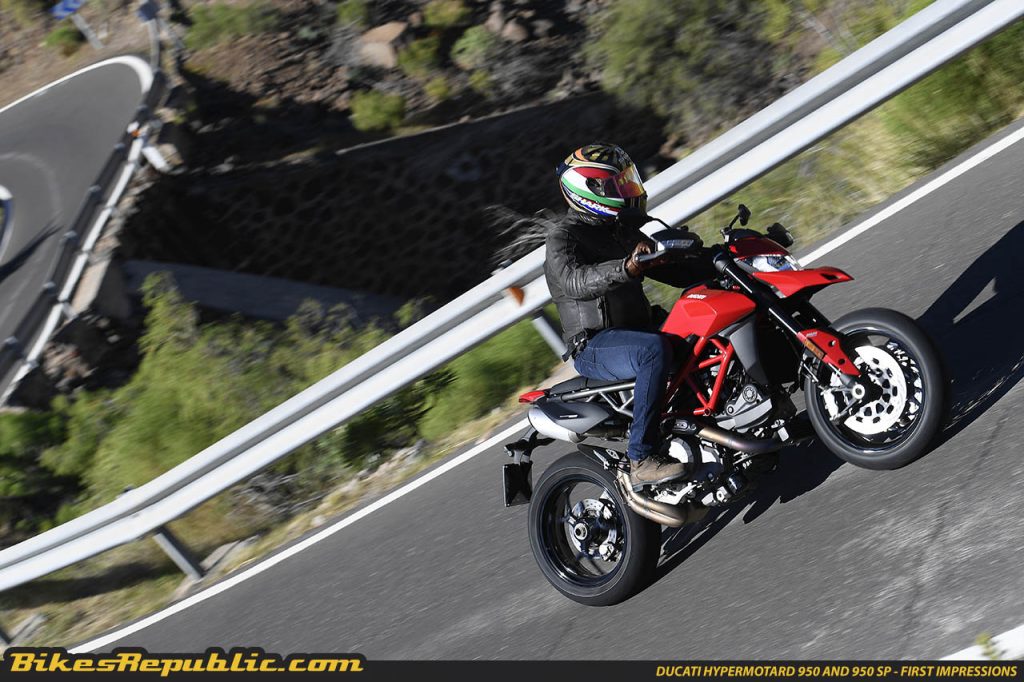
And how do you make an already agile bike even more agile? You mess around with the ergonomics and the dimensions of the bike. The standard 950 is short, shorter than the hardcore SP variant.
A short bike is always easier to chuck around than a longer bike. The handling is also aided by a more aggressive 25 degree rake, while wider handle bars gives the bike a more commanding feel.
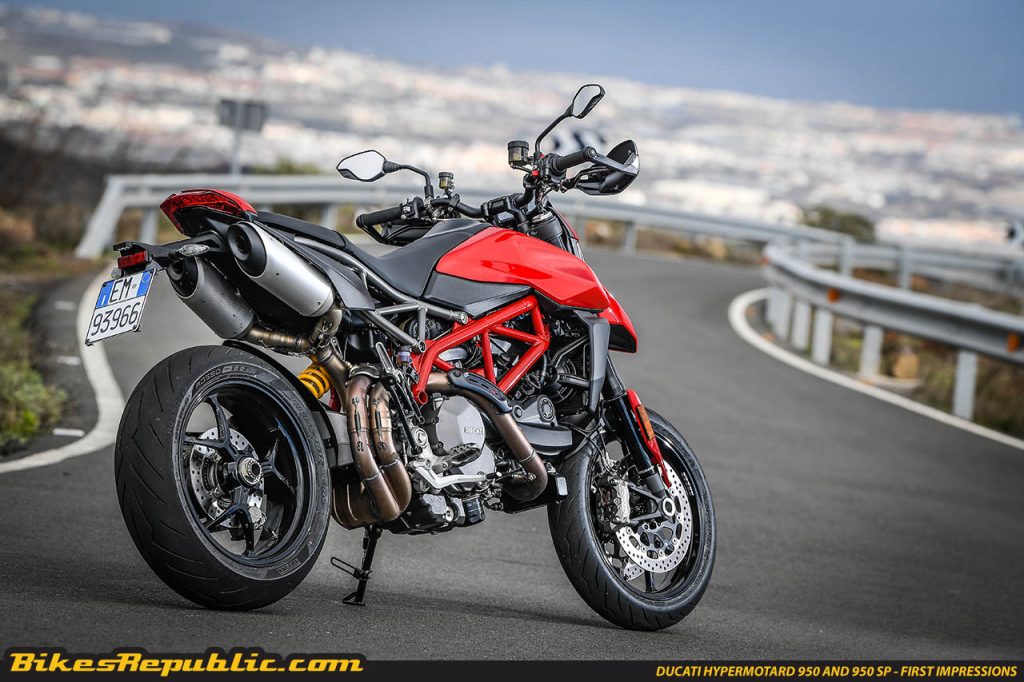
If your riding style is more supermoto than superbike, you will appreciate the fact that the steering sweep angle is an enormous 70 degrees.
And if you are more of superbike person, then you will probably love that the lean angle is a very generous 44 degrees on the standard bike while the SP offers 47 degrees.
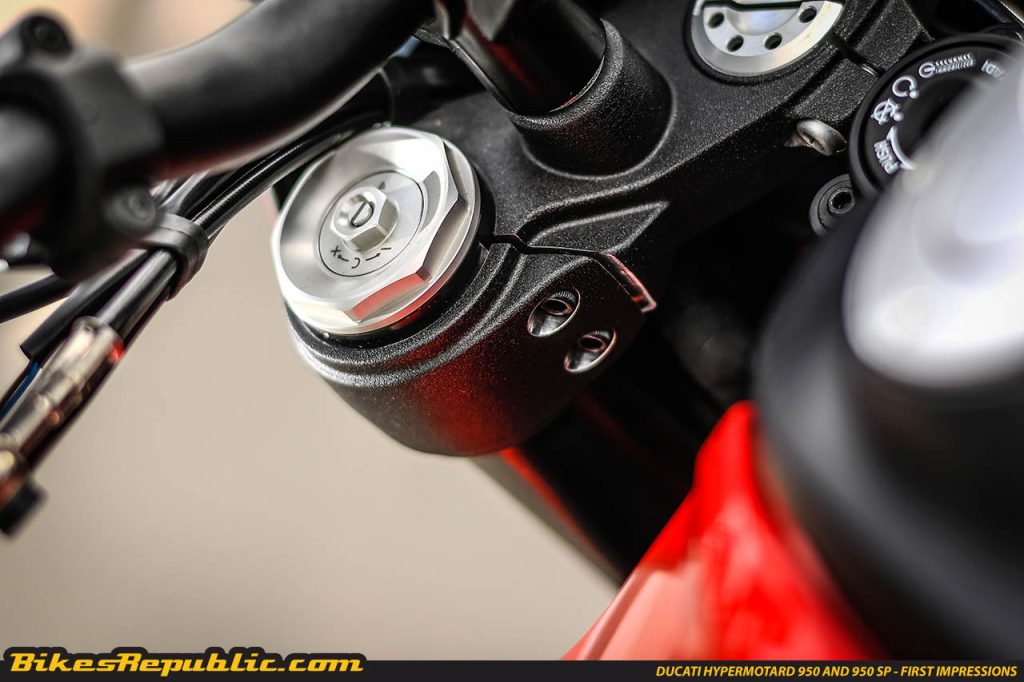
Of course the suspension and tyres play a huge role as well. The standard bike runs on a Sachs shock and inverted Marzocchi forks, while the SP gets Ohlins all round. The Marzocchi fork are fully adjustable and is about half a kilogram lighter than the 939’s forks.
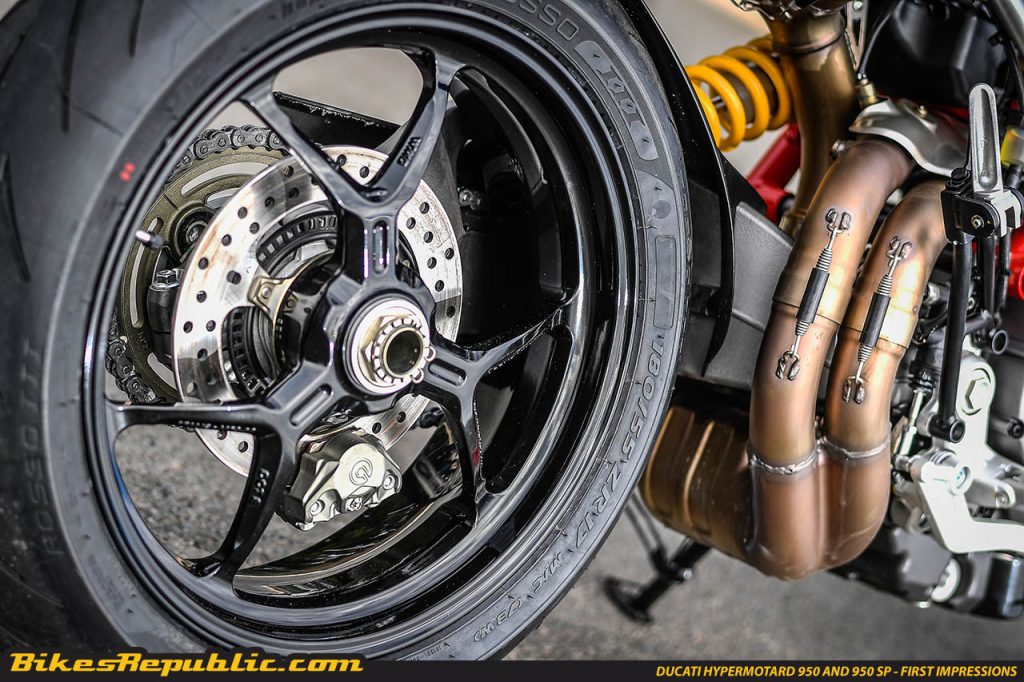
As for the tyres, the standard bike runs on Pirelli Diablo Rosso III tyres wrapped around aluminium Y-spoke wheels, while the SP runs on Diablo Supercorsa SP wrapped around forged Marchesini wheels. The wheels are nearly a kilo lighter than the old ones. Grip is heroic.
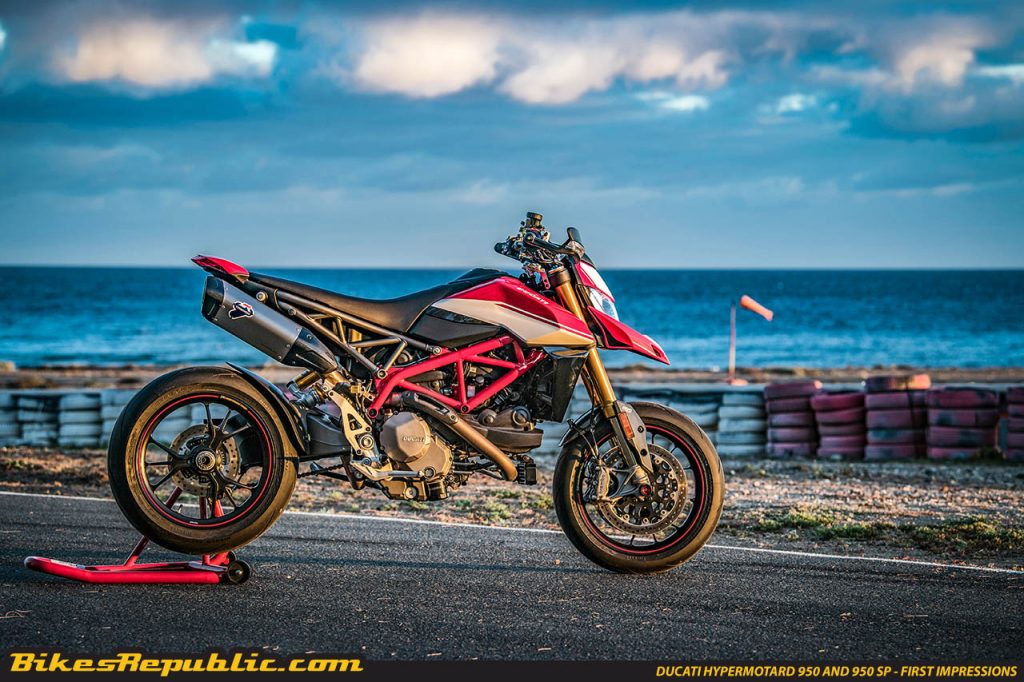
And it was only in the hills of Grand Canaria around the sandy slippery corners where the Diablo Rosso III’s were put to the test, but a little slide on a hypermotard never hurt anyone. And it was all very manageable, just a little lean corrected by the electronics.
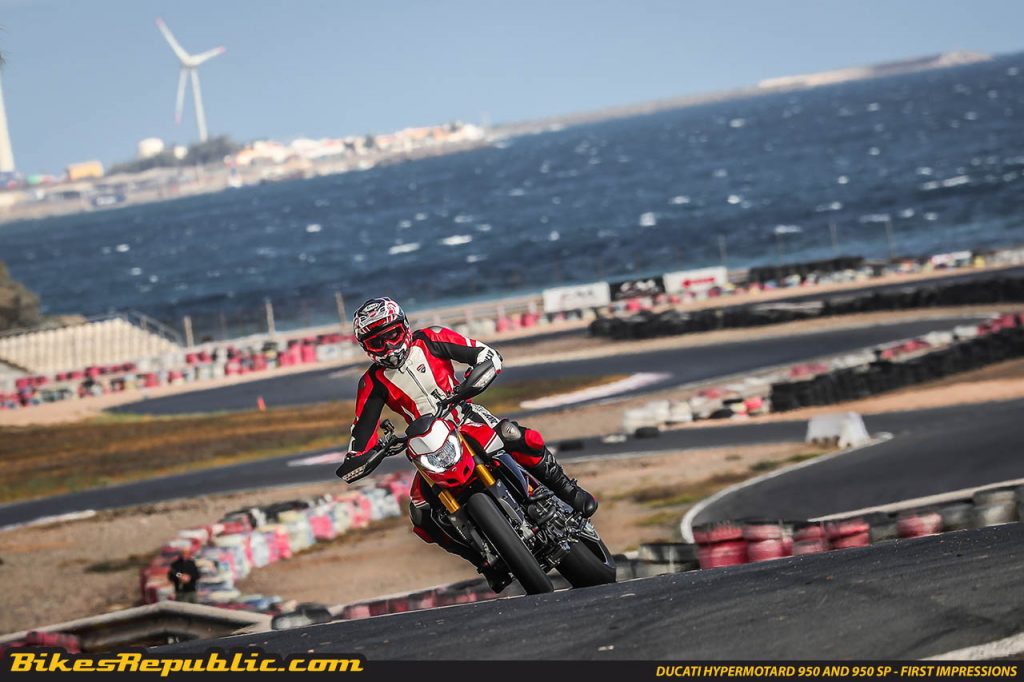
Enough with the details and tell us how it runs already!
Brilliantly, absolutely fucking brilliantly. We began with the standard 950 for a 140km round trip to the hills. The sitting position is a familiar one as soon as you get on the bike. But because the seat is narrower at the front, it is easier for you to get your feet flat on the floor, which is something shorter riders will appreciate.
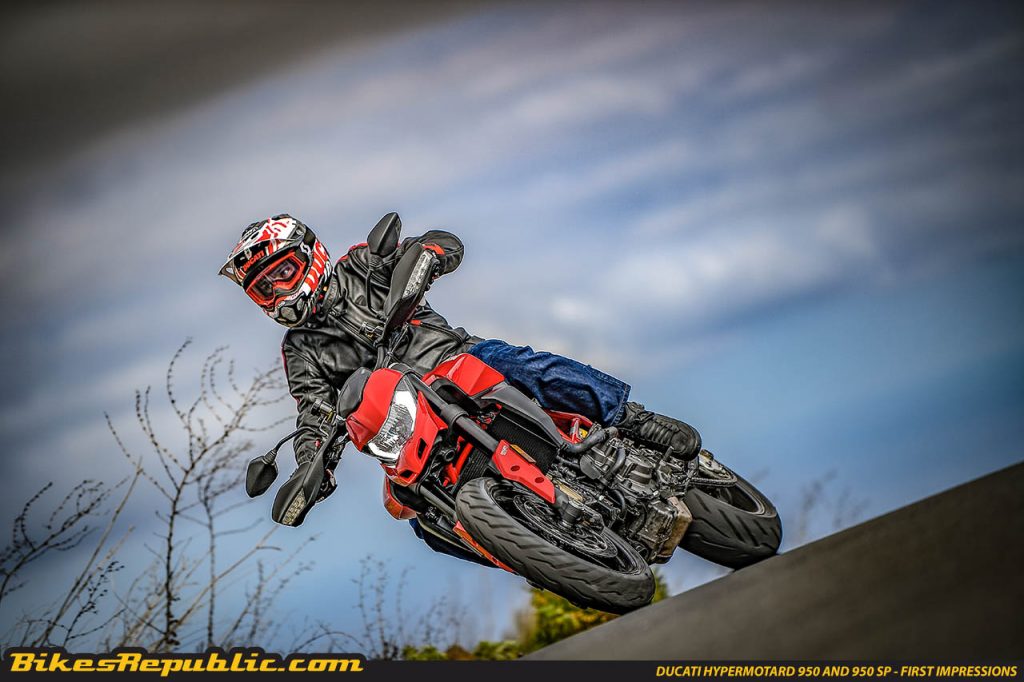
The hydraulically assisted clutch set up is light with little tension at the lever, giving the bike a friendly character from the get go. The gearbox is a wet multi-plate 6-speeder with a slipper function.
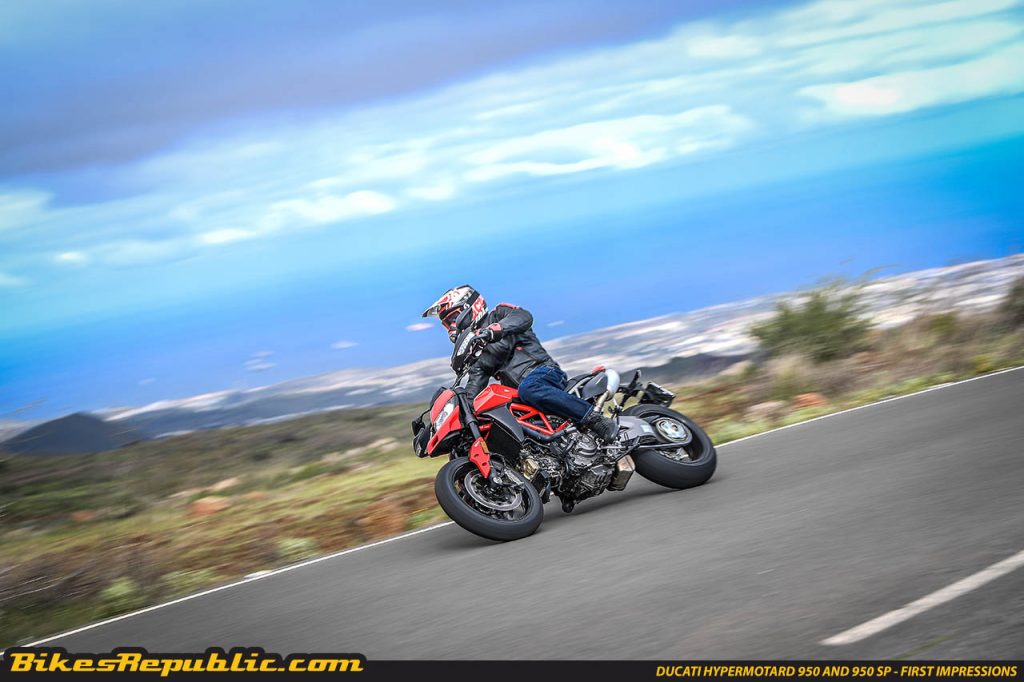
Around the tight corners of the mountains, the 950 was happy to be flicked into corners. You can rely on the masses of torque and smooth, linear torque curve, but if you are the type that relies on engine braking, that works too as the slipper clutch ensures the rear wheel stays in line.
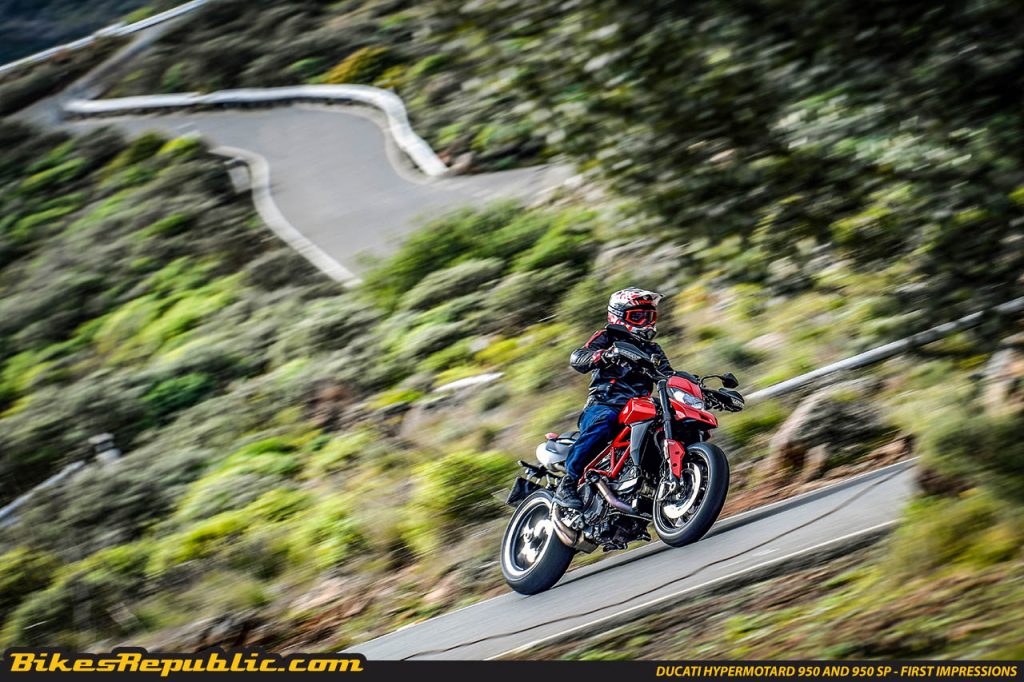
I rode the hills in Touring and Urban mode, and even in touring the bike was in proper attack mode, charging into corners, letting me dive in late with the electronics cutting off the throttle only when the road became noticeably slippery.
Touring is not as aggressive or as eager as it is in Sport mode, throttle response is largely subdued even, but it is still hugely fun.
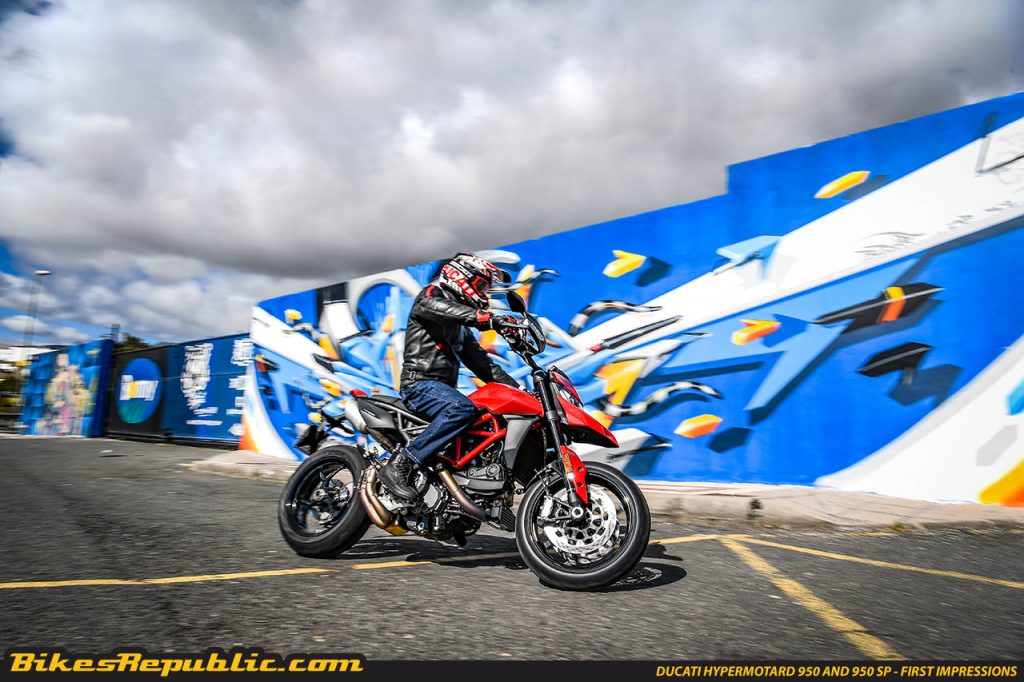
Urban is, dare I say it, boring on a bike hailed as a hooligan. It is meant for urban conditions, for when you want to reel it all back in and let the bike flow with traffic. It is meant to keep you safe, and so for that, it is best to only use the mode when it is raining or when traffic is heavy.
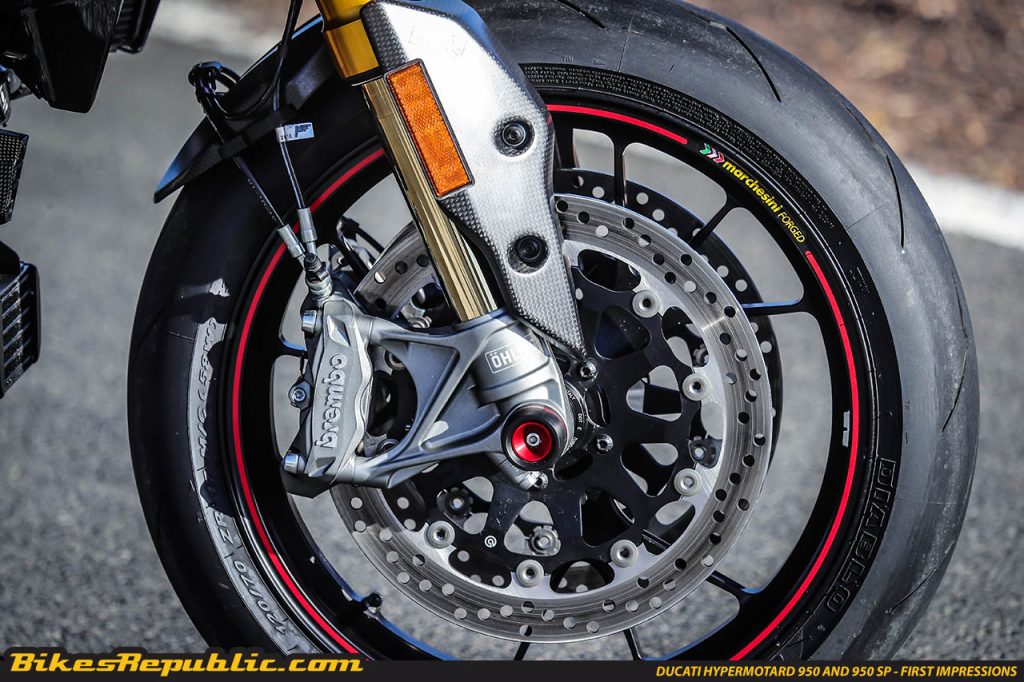
The brakes on both the 950 and the 950 SP are made up of twin 320mm semi-floating aluminium flange discs with radially mounted Monobloc Brembo callipers with quad-piston and twin pads and with Bosch cornering ABS.
The front has a sharp bite and will catch you off-guard if you’re not careful, so is best handled with one finger.

All in all, the Hypermotard 950 still retains its hooligan character but is updated with some much needed refinements for everyday usability like passenger footpegs, thicker seat padding, and the urban mode that makes all that power a lot more manageable when riding two up around town.
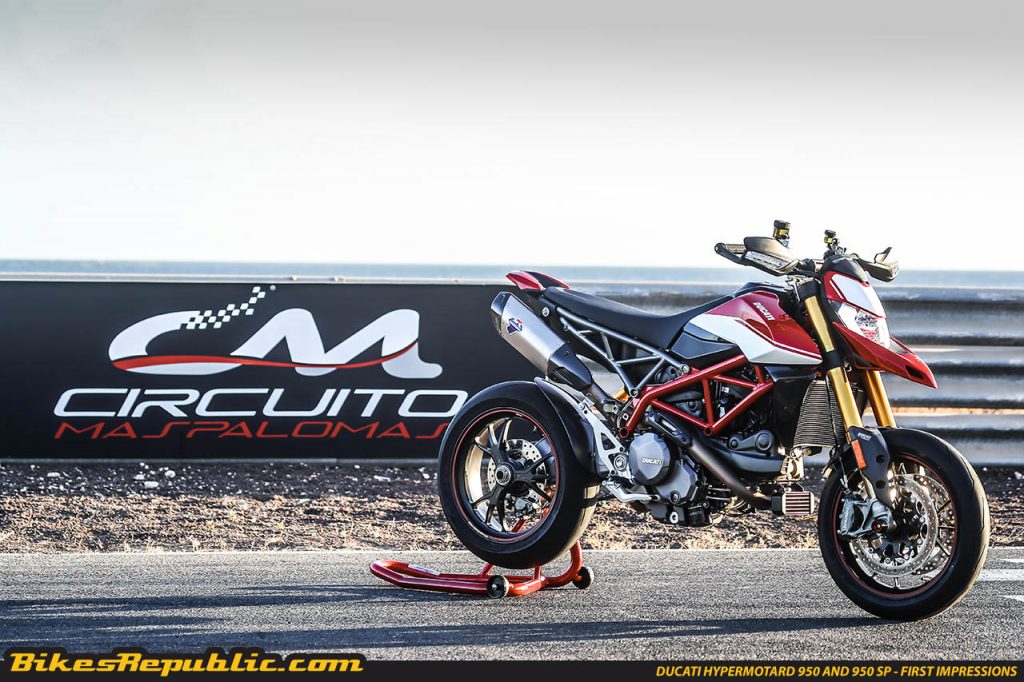
And what about the 950 SP?
If the standard 950 is hooligan bike, then the 950 SP is a proper, barely road-legal race bike, it is as naughty as it gets with a number plate on it. Out of the mountains on the 950, we headed to the short and tight circuit of Maspalomas to test the SP.
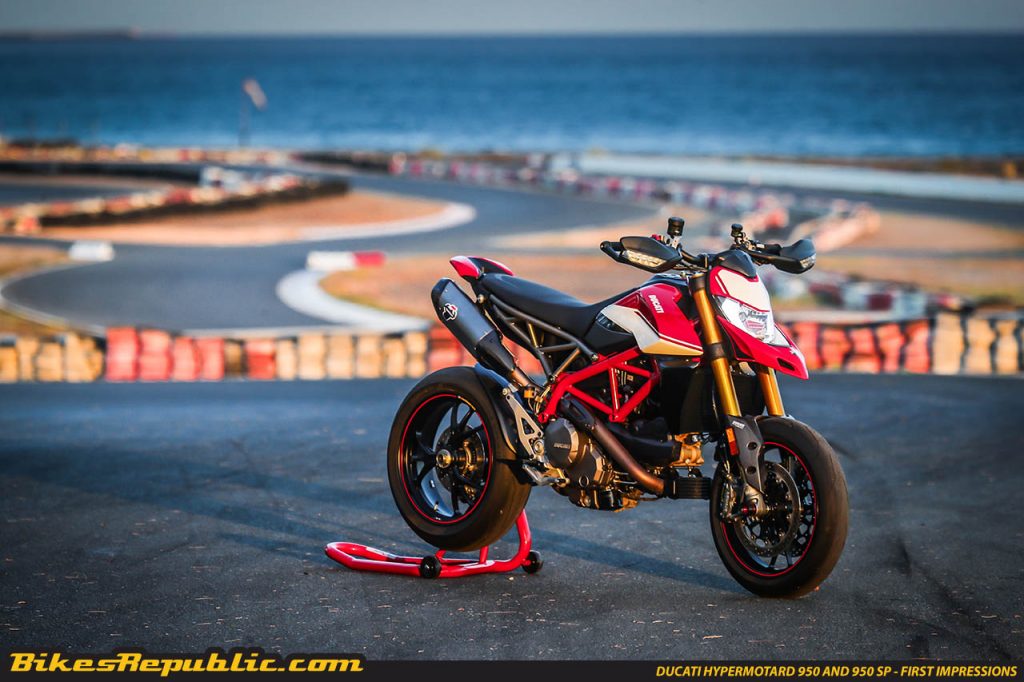
It is essentially the same bike, but with some revisions to make it sportier than the standard. The suspension for starters is taller and offers 15mm more travel at the front and 25mm at the rear.
The seat is also 20mm taller than the standard bike, and this taller sitting position gives the bike a more nimble feel.
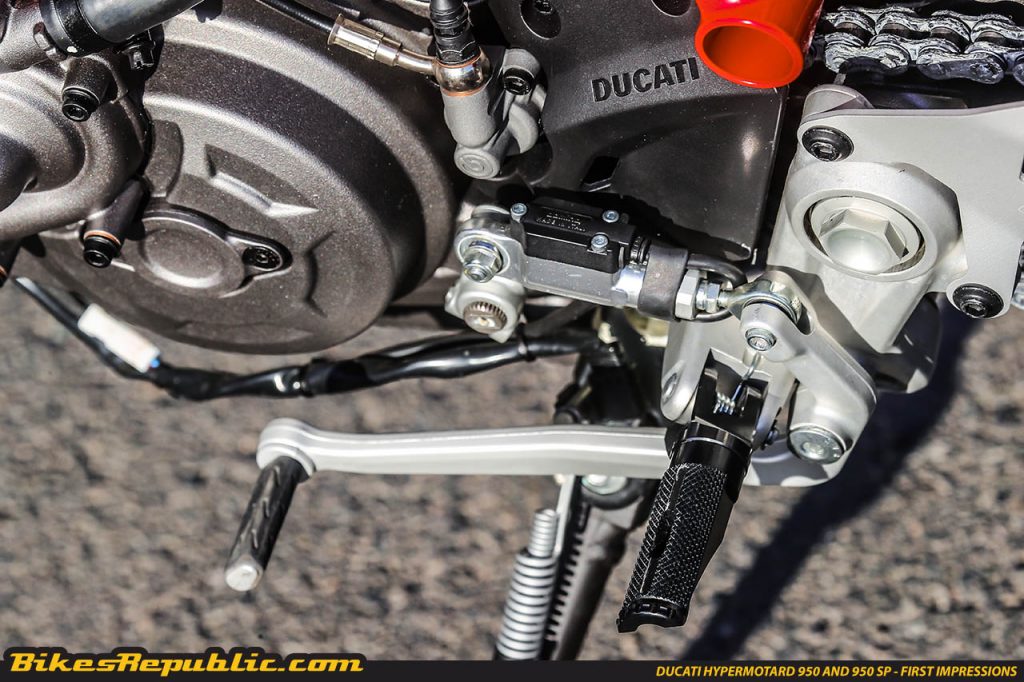
Other than that and probably the naughtiest difference between both bikes is the inclusion of the Ducati Quick Shifter (DQS) EVO as standard on the 950 (optional on the 950).
The DQS EVO works on both up and down shifts and gives the bike a naughtier character than the standard bike.
It is only when you’re really slowing down that you need to use the clutch, but otherwise, the system does it for you.
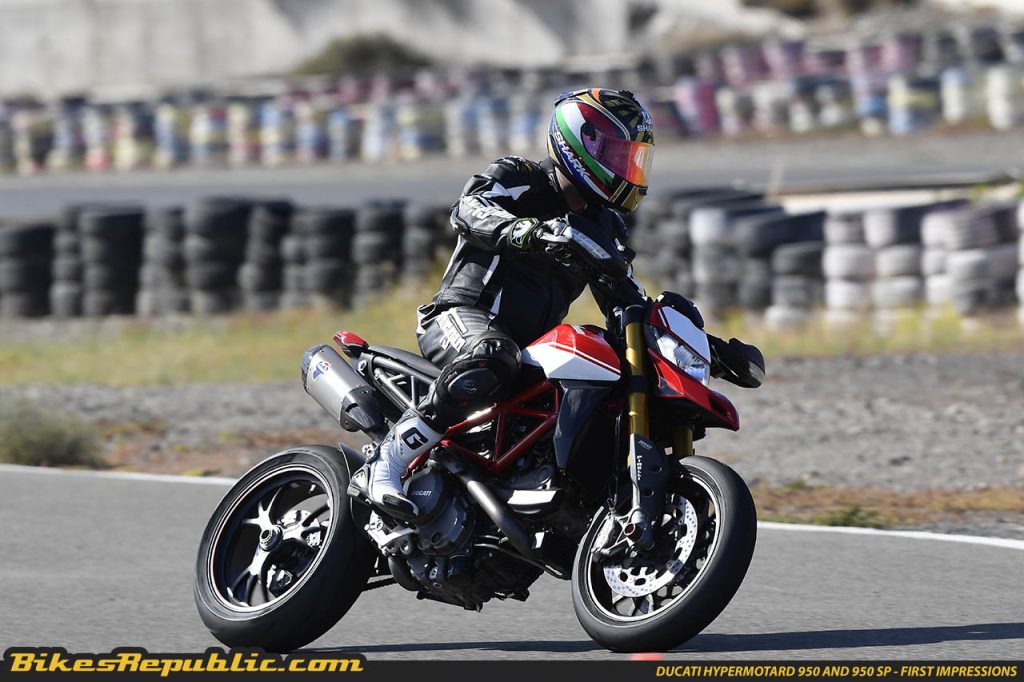
I tried to ride in both supermotard and in superbike style, though I personally prefer the latter, and I can attest that the SP obliges both riding styles.
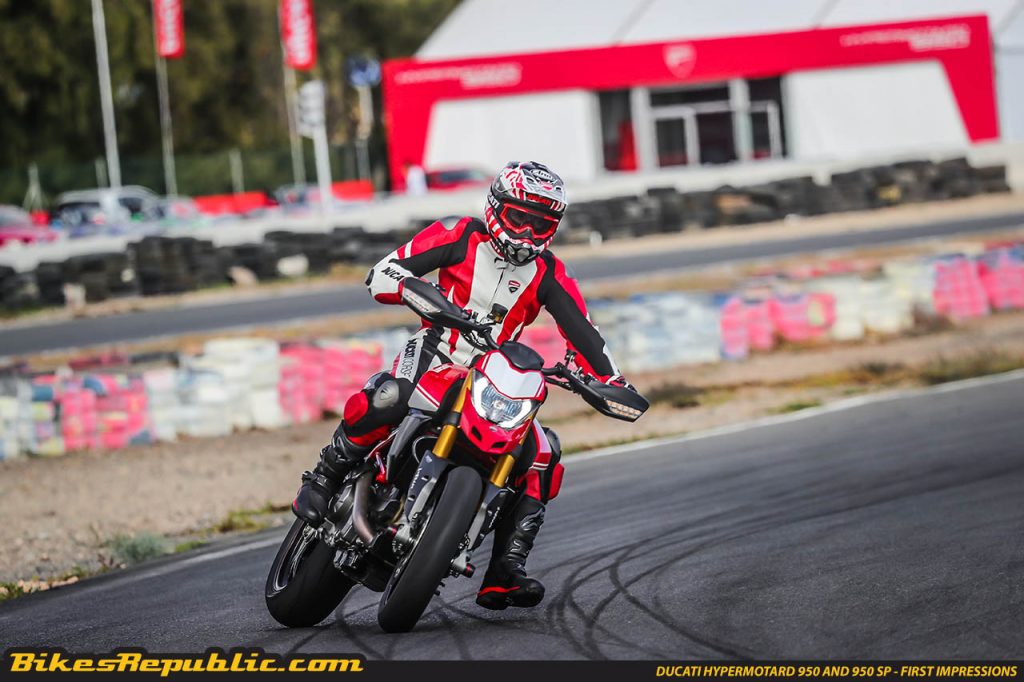
The new Hypermotard also offers a unique system that turns you into a riding superhero called Ducati Slide by Brake function. A system that first debuted in the Panigale V4S, and has trickled its way down to the Hyper 950.
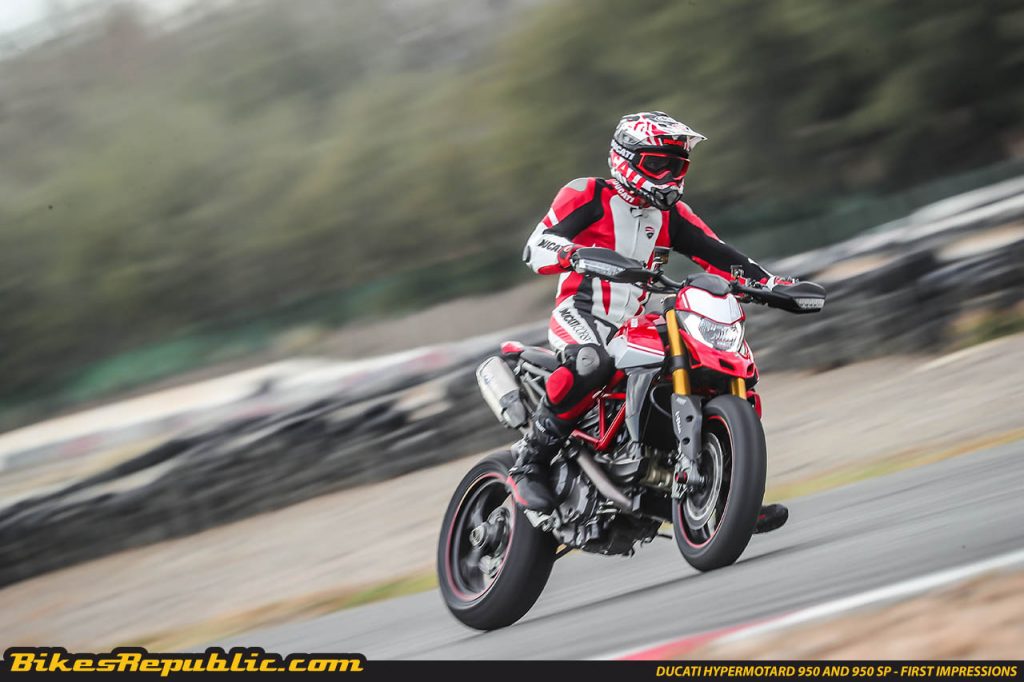
It works when the ABS is in level 1, and you need to invoke it by getting hard on the rear brake while turning the bike. It is here that the bike will automatically slide the rear tyre out by 10 degrees and you control the slide using the rear brake.
It takes some time to trust the system to do it for you as you usually control a slide from the throttle instead of the rear brake. Understandable then that some people may prefer to use engine braking to get the rear to slide out.
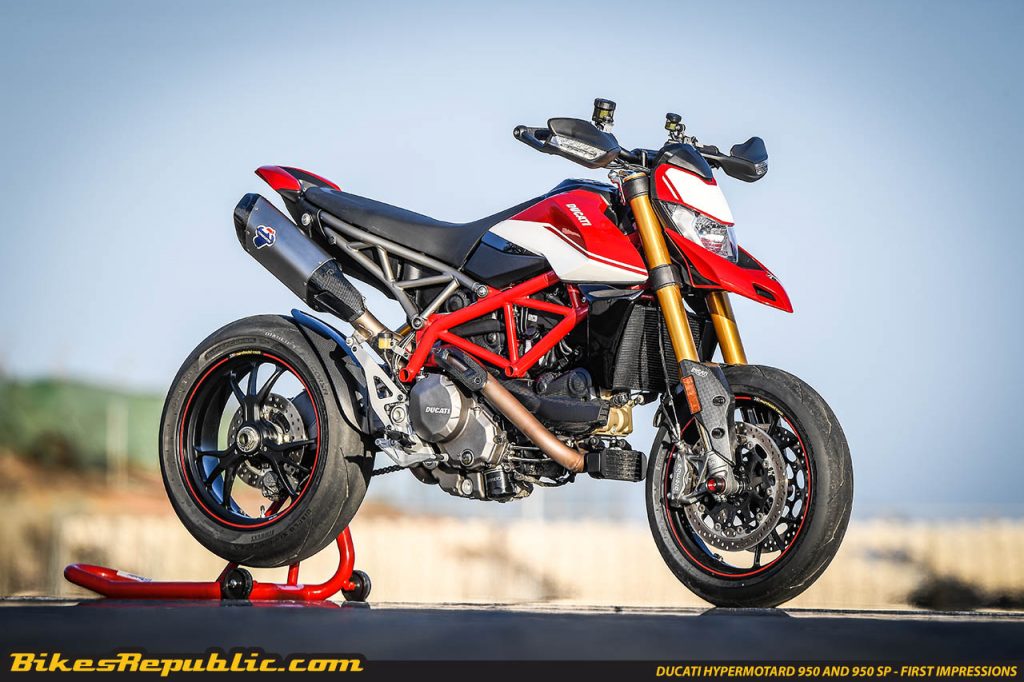
Around the tight and twisty track of Maspalomas, the SP felt natural after a few laps, like it was built specifically for such riding pleasure and being able to ride it around town is just a bonus.
The tyres never seemed to run out of grip at any lean angle and the engine felt more at home on the track than it did on the road.
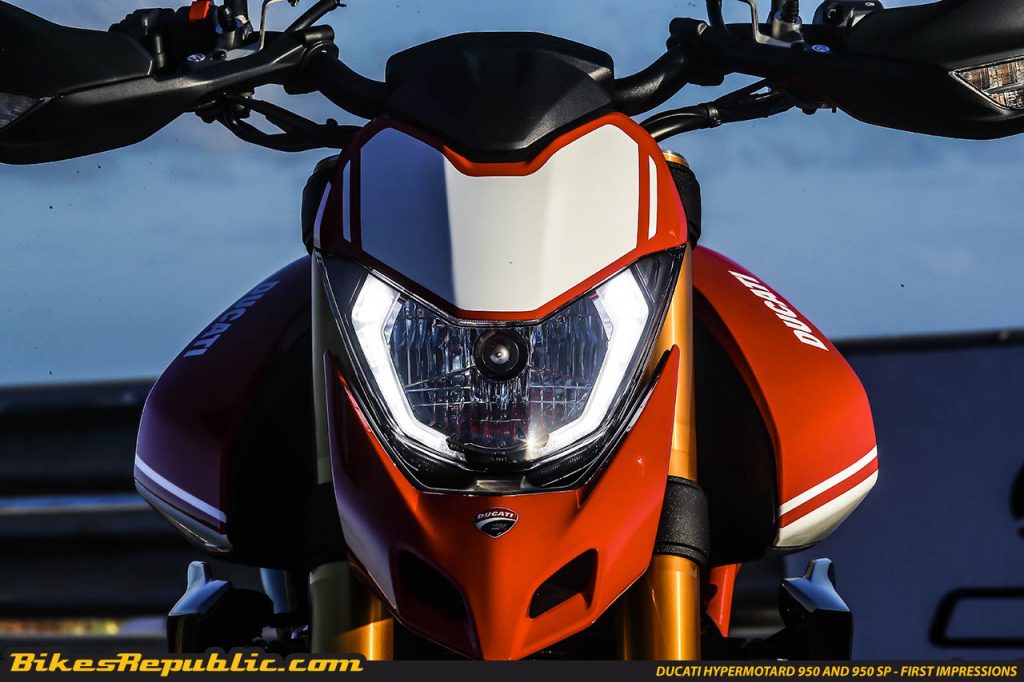
The revs cut off at 10,000rpm, and with the DQS banging home gears quicker than you could manage yourself, you hit over 100km/h in a few hundred meters before getting on the brakes hard, pushing (or pulling) the bike down and letting the electronics manage everything else, before getting on the throttle hard again.
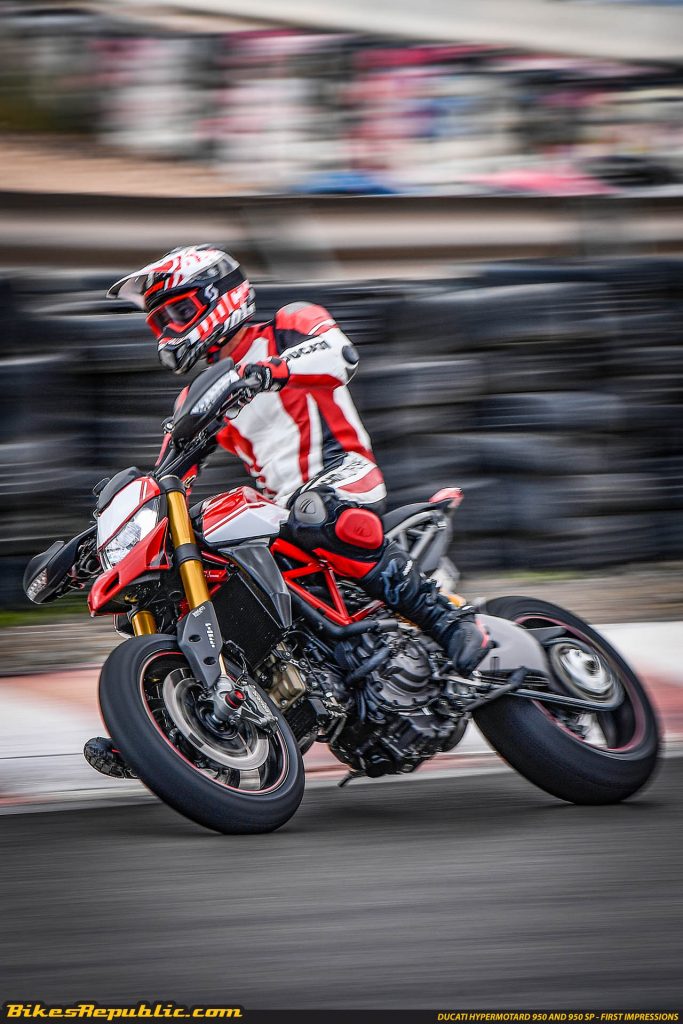
Wheelies come naturally on this bike and the standard 950, and sometimes even unexpectedly.
But Ducati had thought of that too and has equipped the new Hyper with a system known as Ducati Wheelie Control Evo that manages unexpected wheelies, giving you maximum traction at all times.
You feel it as a sudden power cut, noticeable interference but it happens so quickly that it doesn’t affect performance.
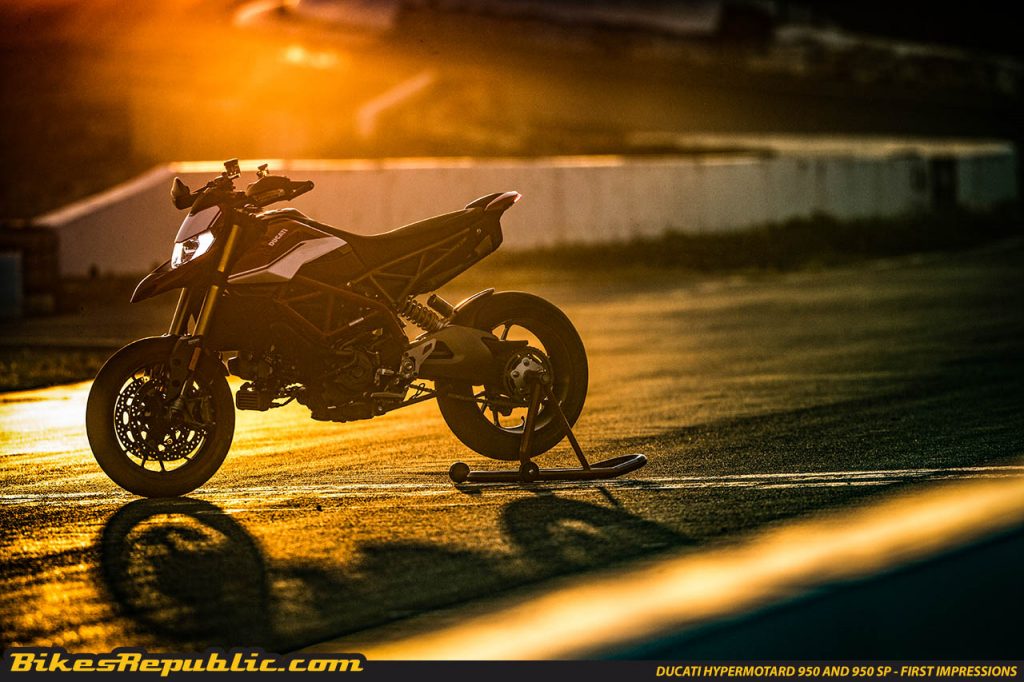
Any complaints?
Just one. Ducati says that the new seat is more comfortable than before, but I think it isn’t that great out on the open road. Gave me a sore bum after about 140km, but if you want touring comfort, buy a Multistrada 950.
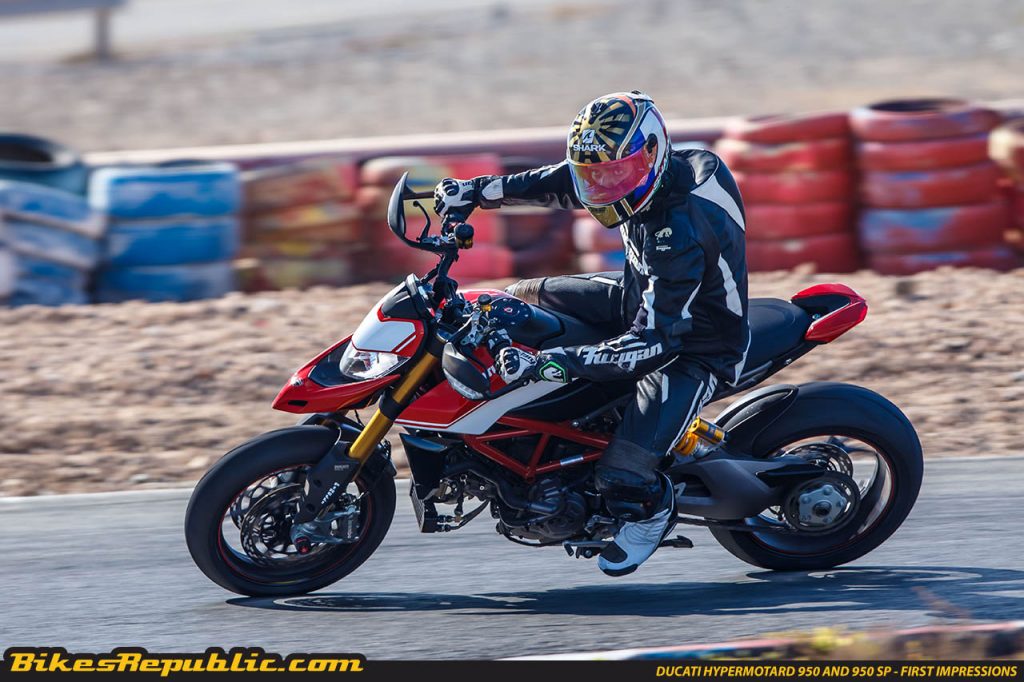
Should you buy it?
If you’re into supermotards and want a bike that gets you places quickly, then the Hypermotard 950 is for you. The SP would be my choice simply because I like its taller height and sitting position. And if you’re going for the standard 950, be sure to opt for a quickshifter and a full Termignoni system.
When will it be in Malaysia?
It should be here by the second or third quarter of the year. We expect it to cost around the region of RM75,000 to RM83,000.

